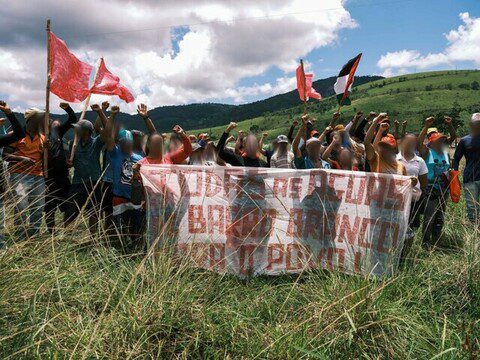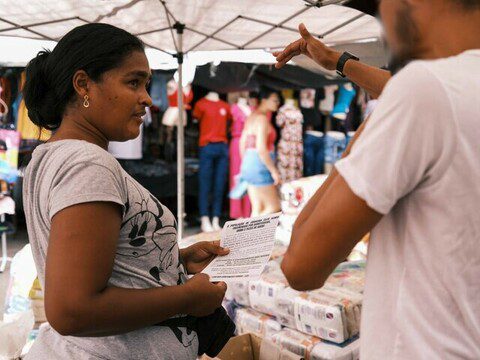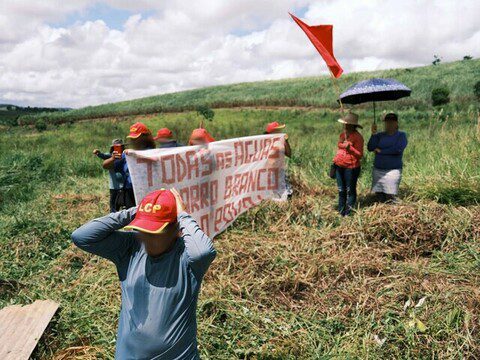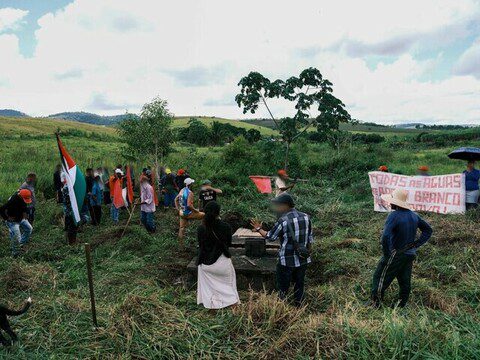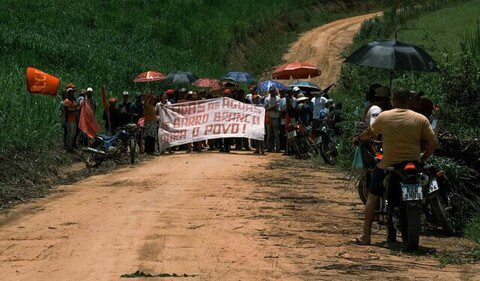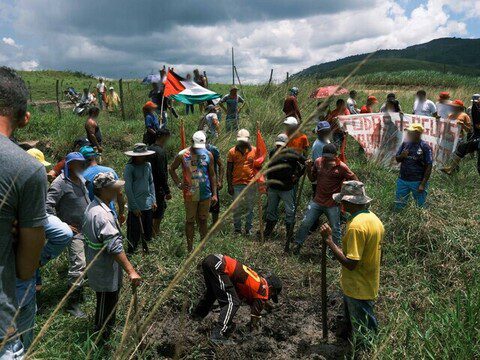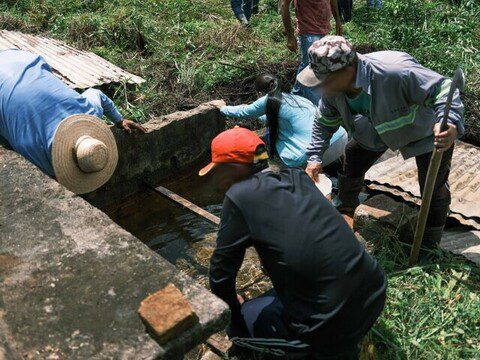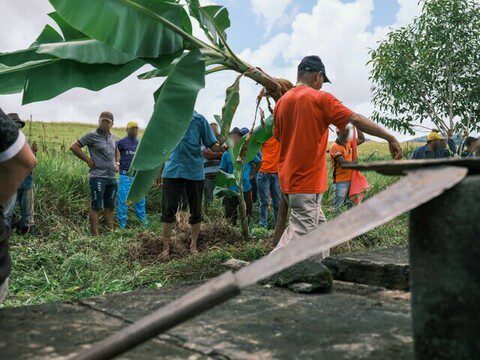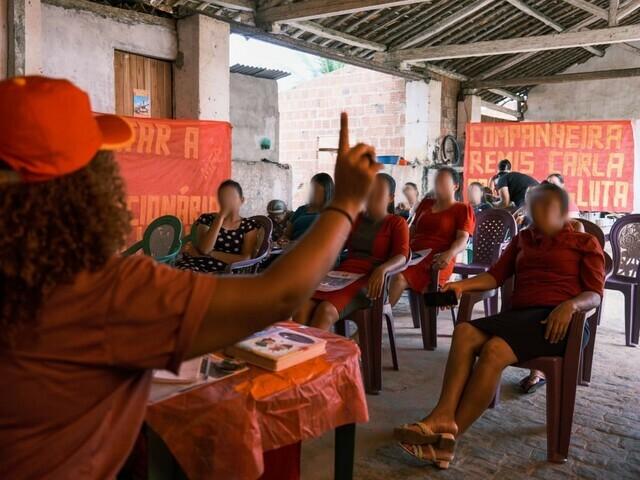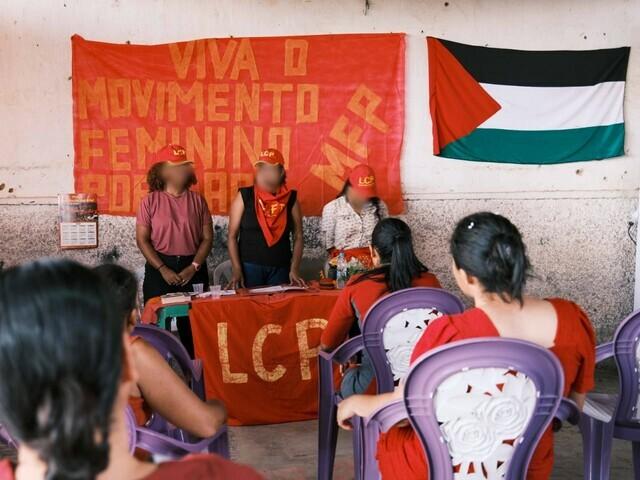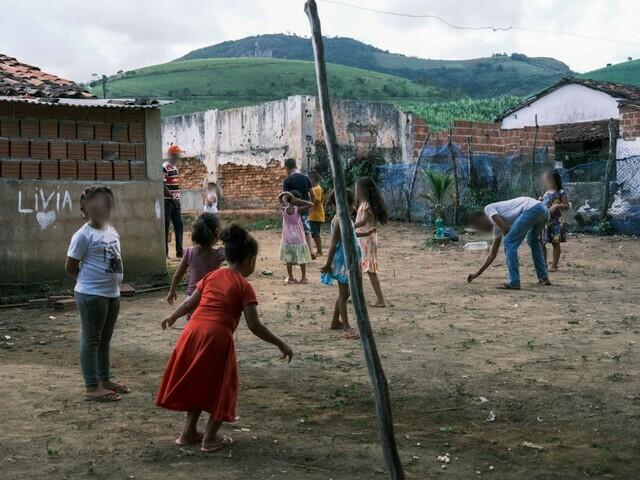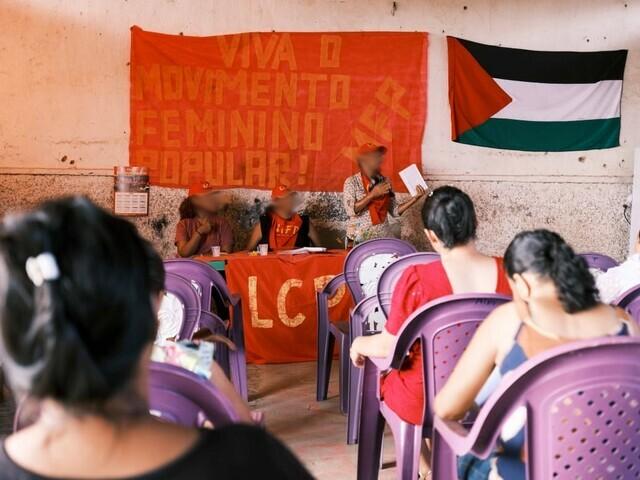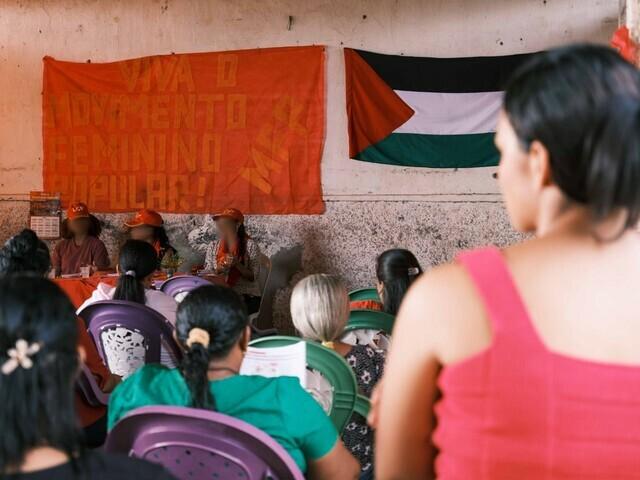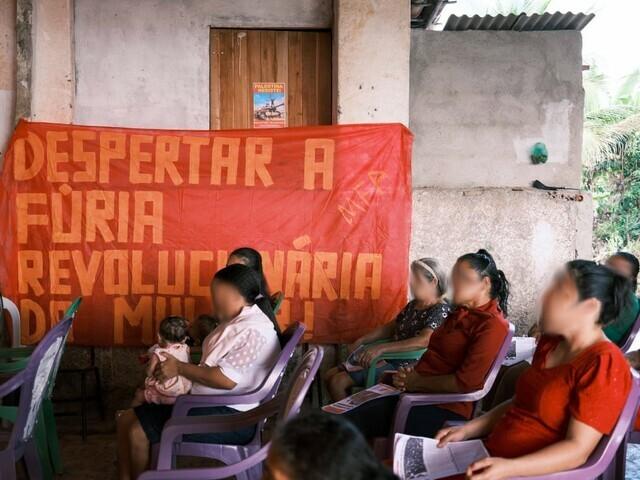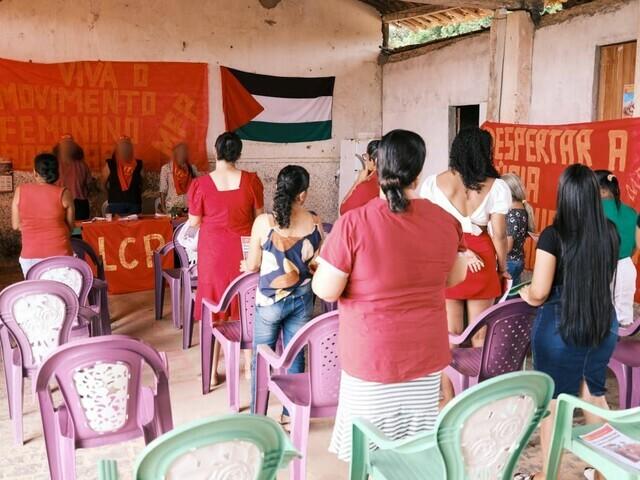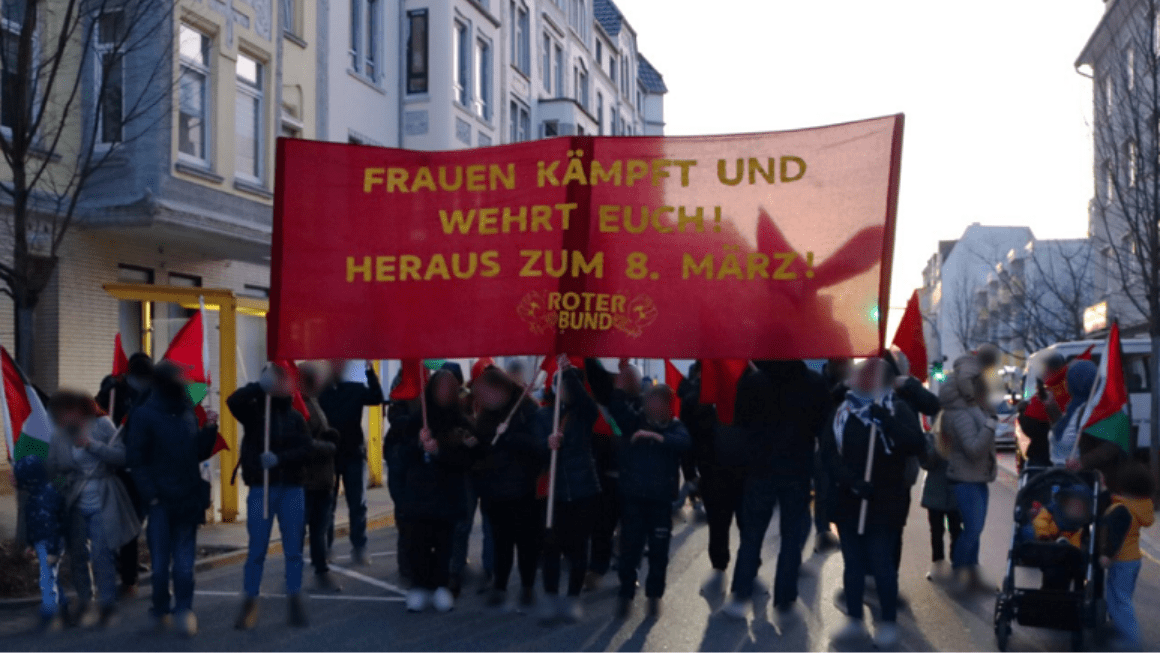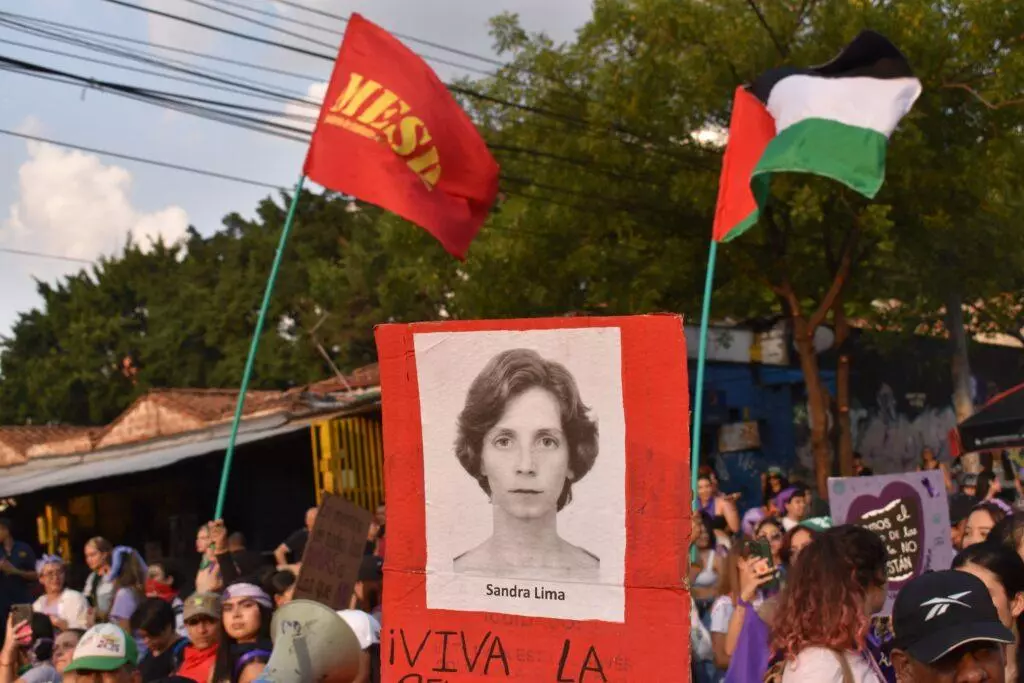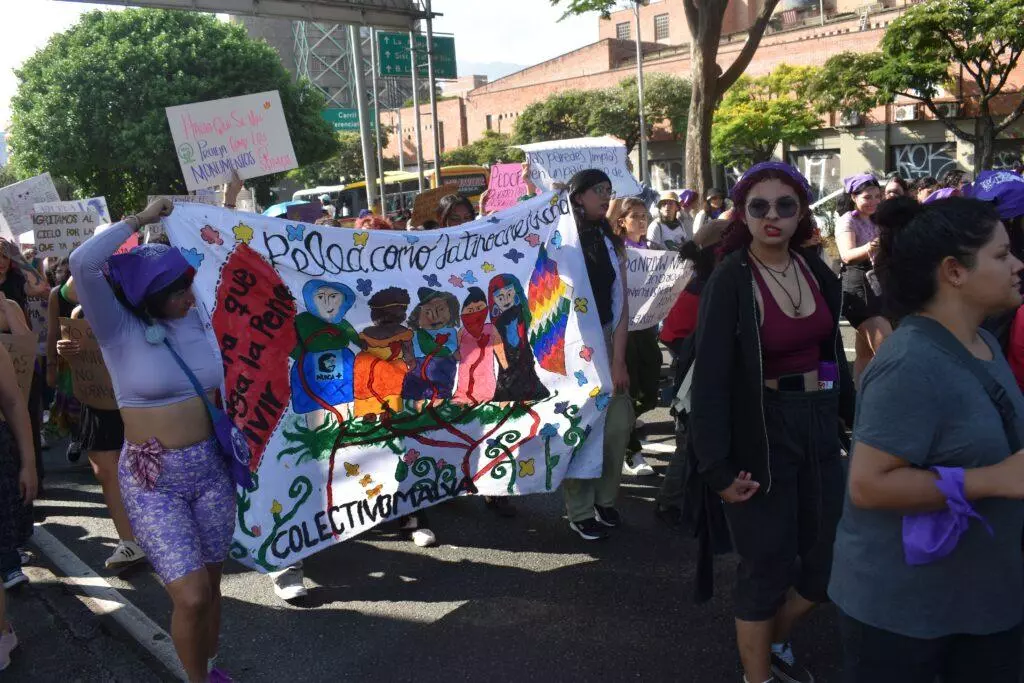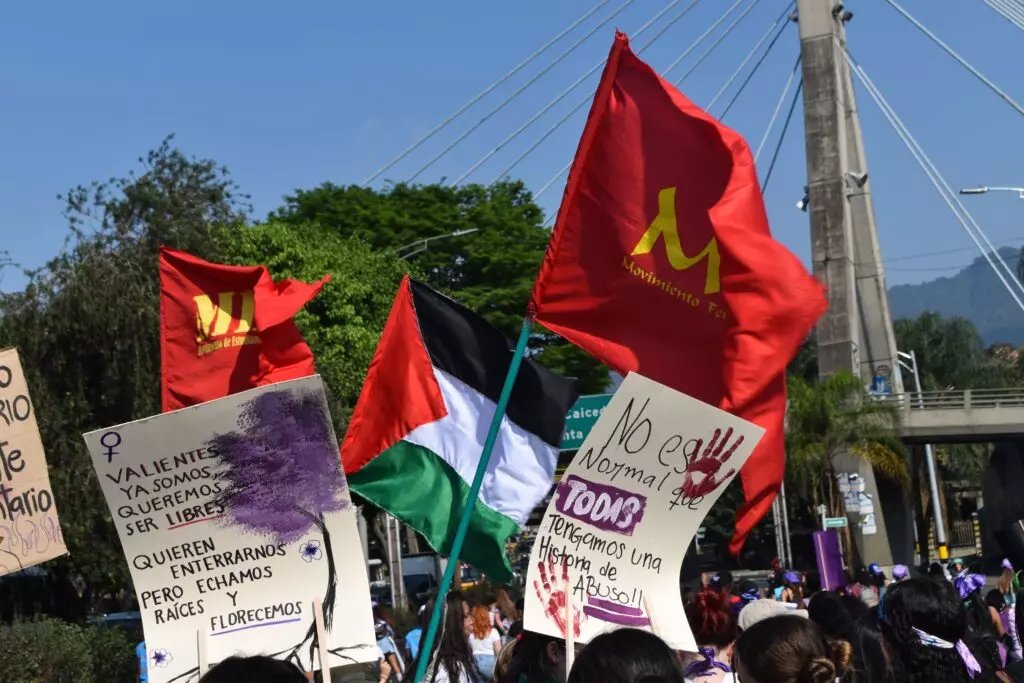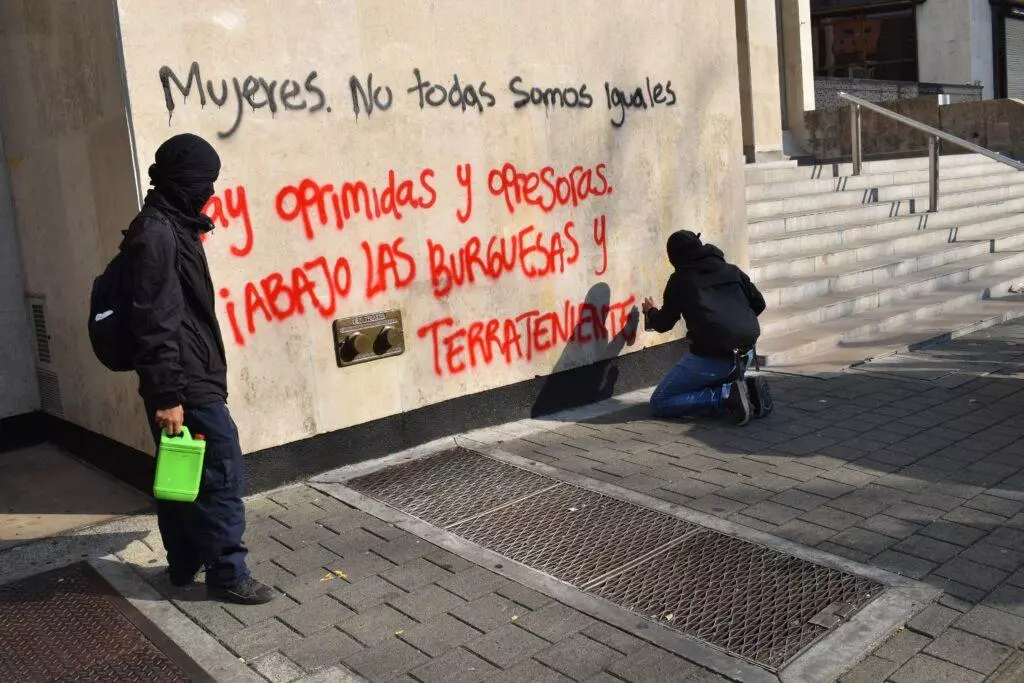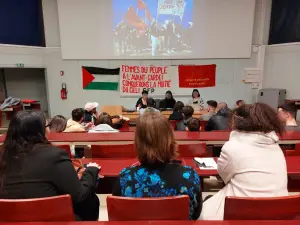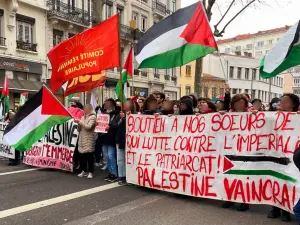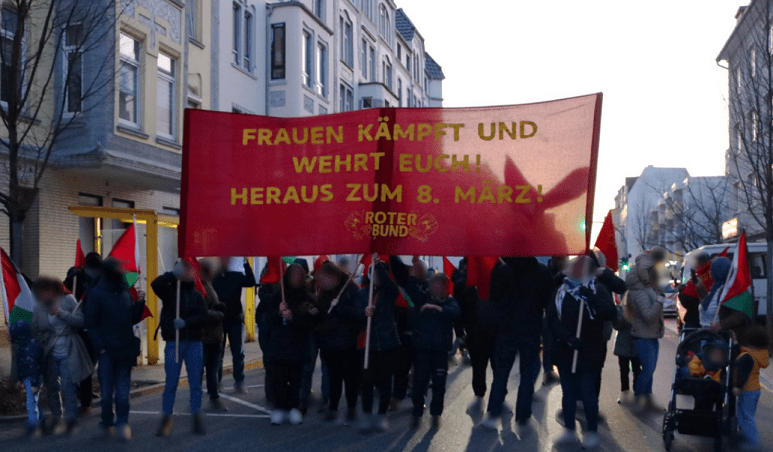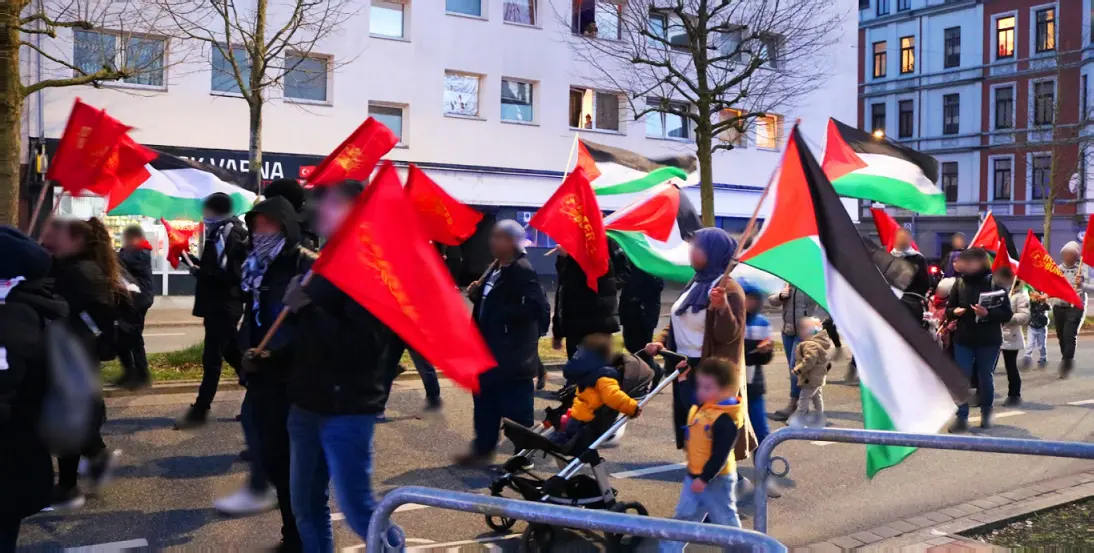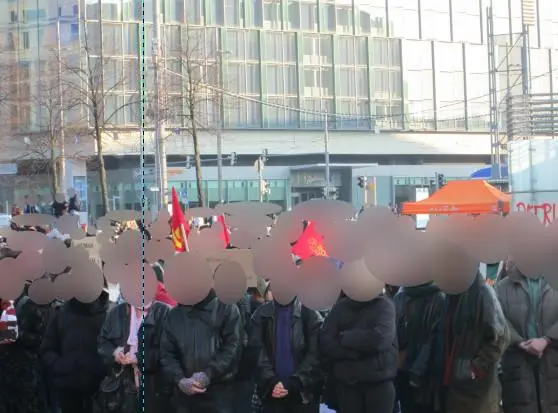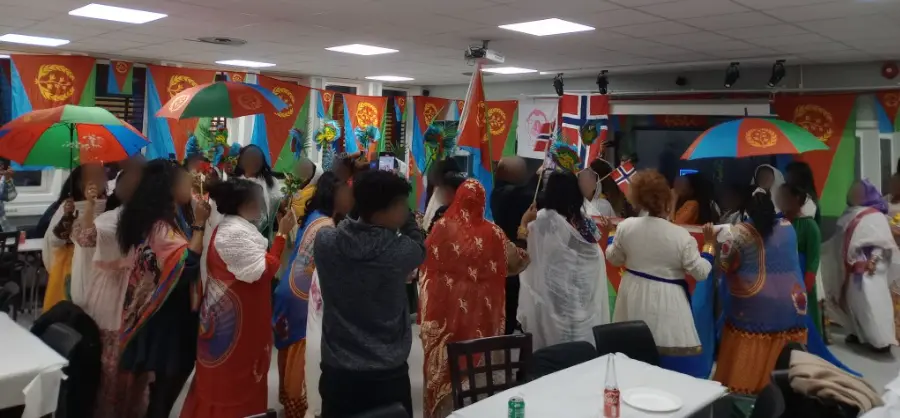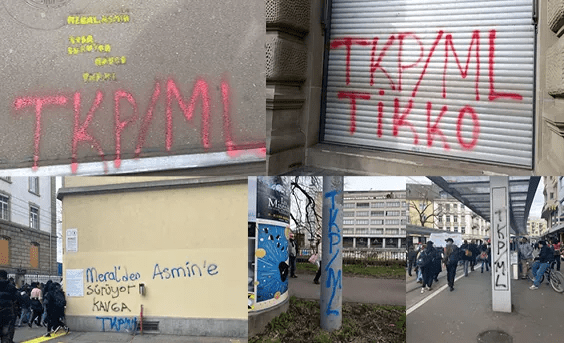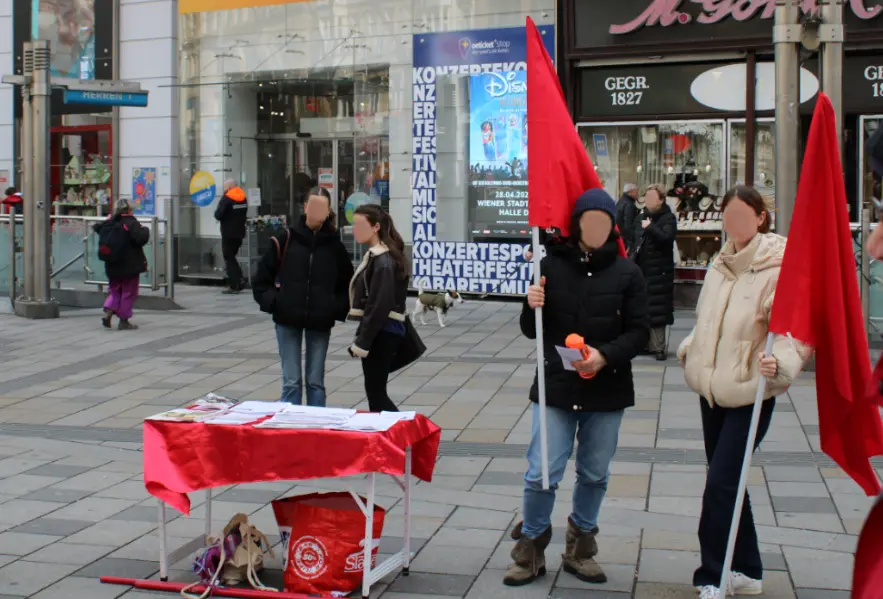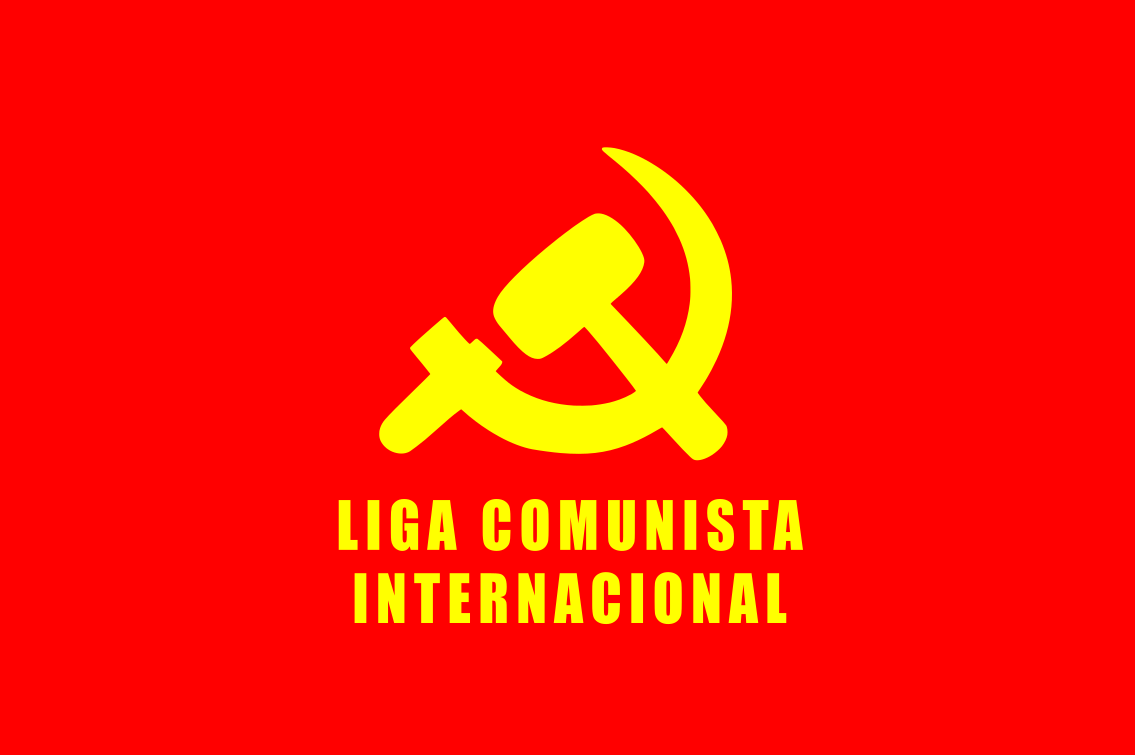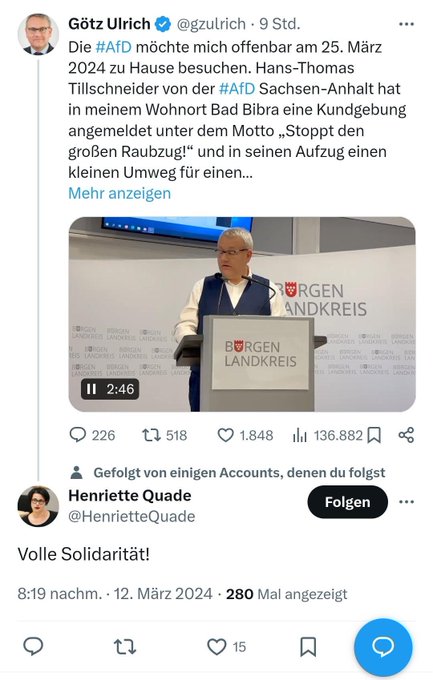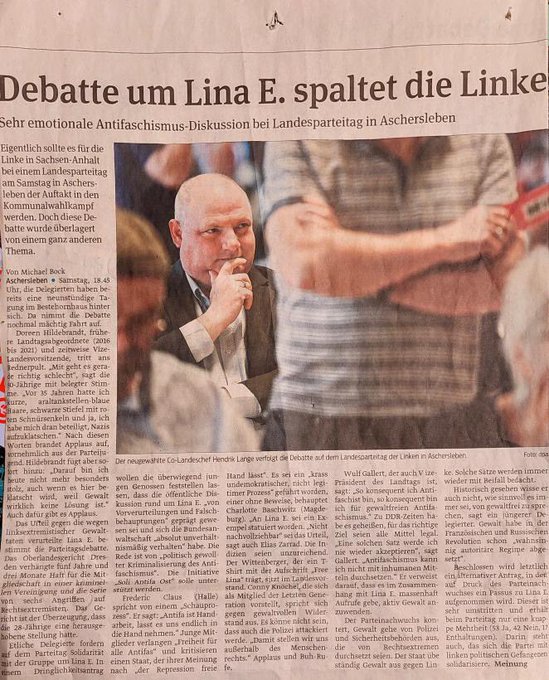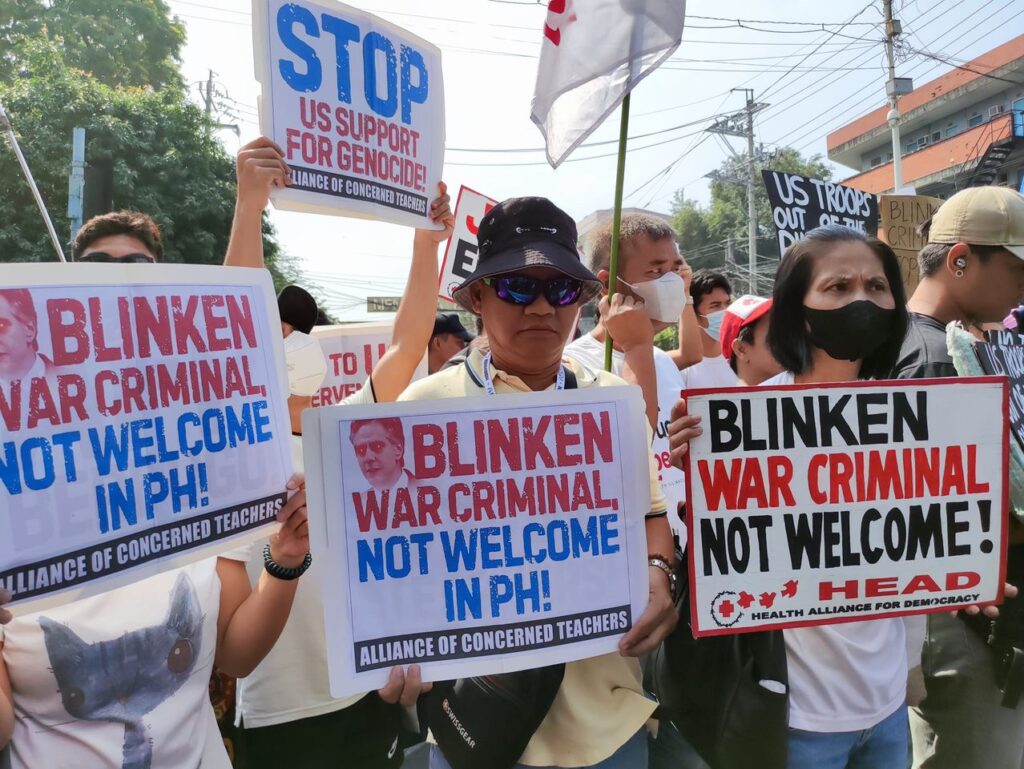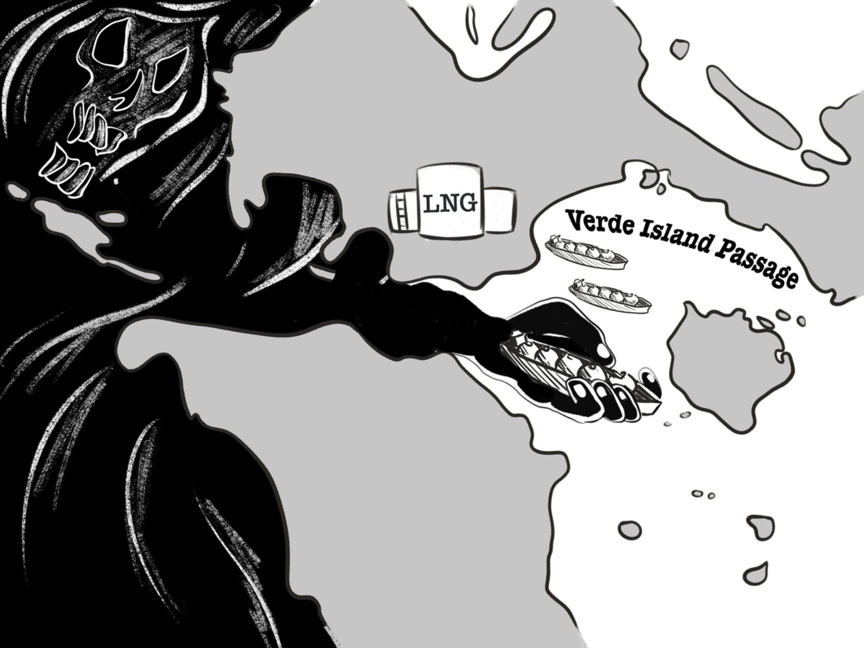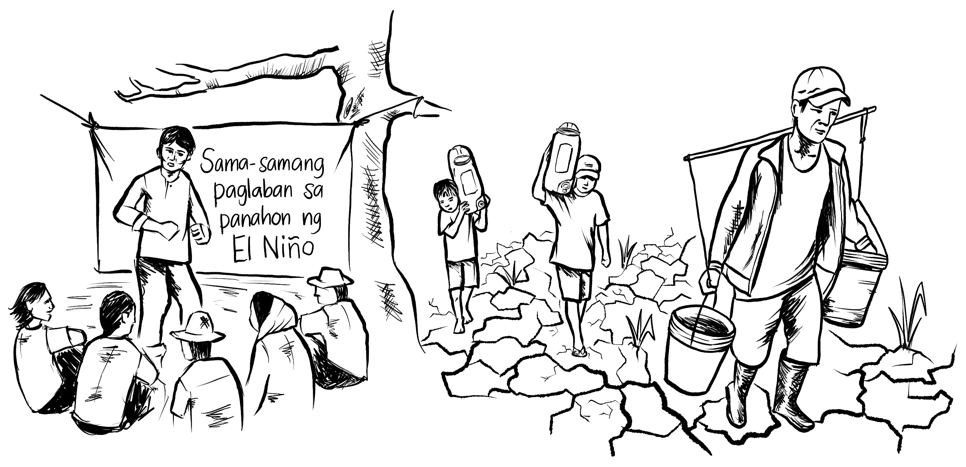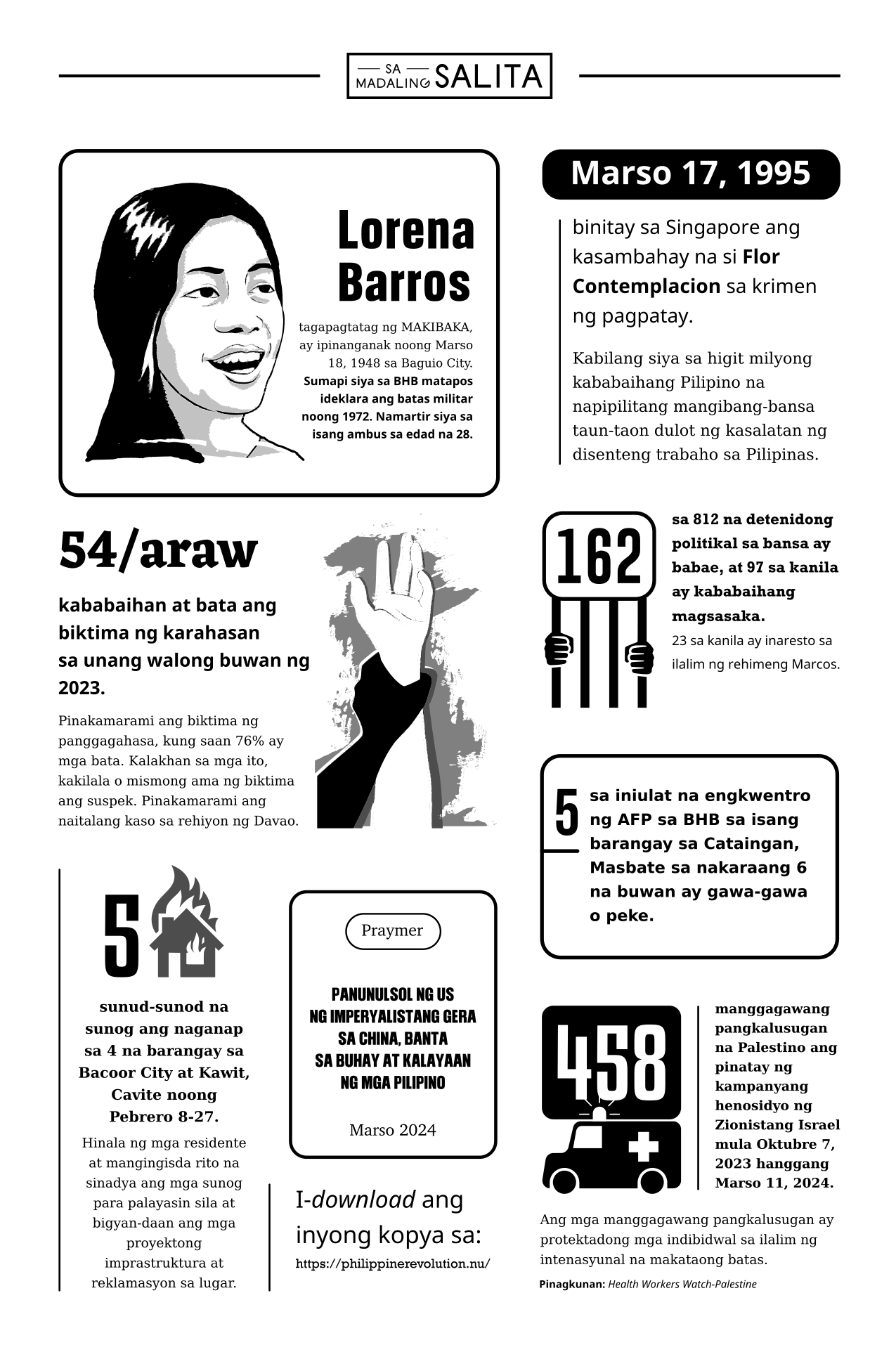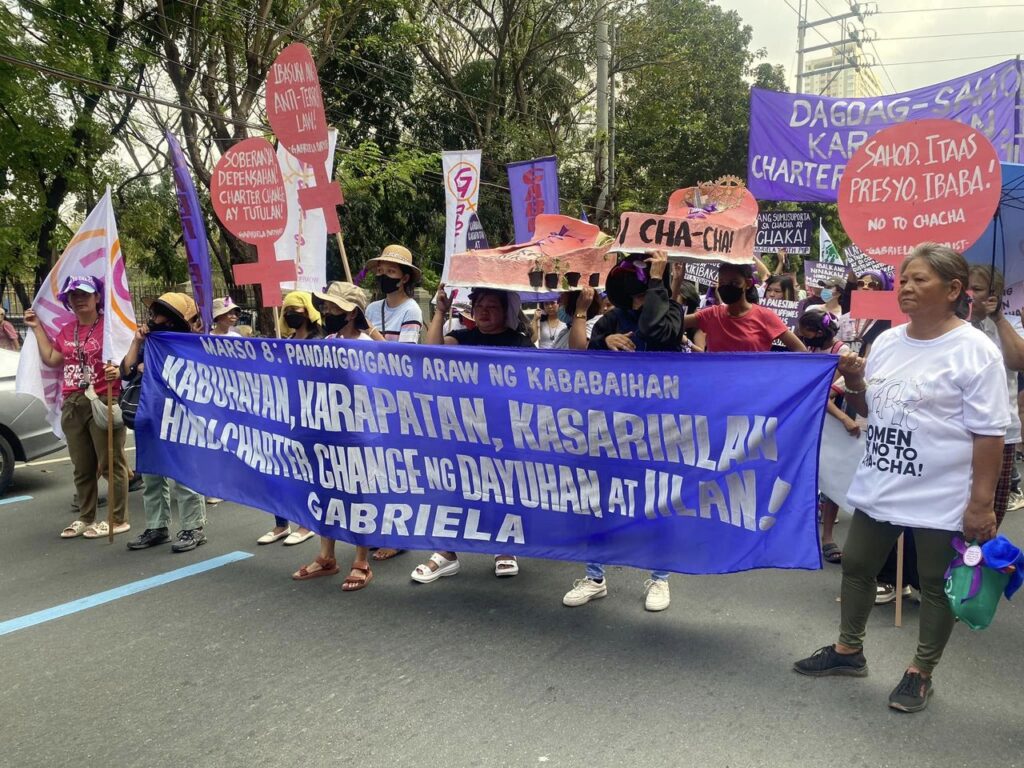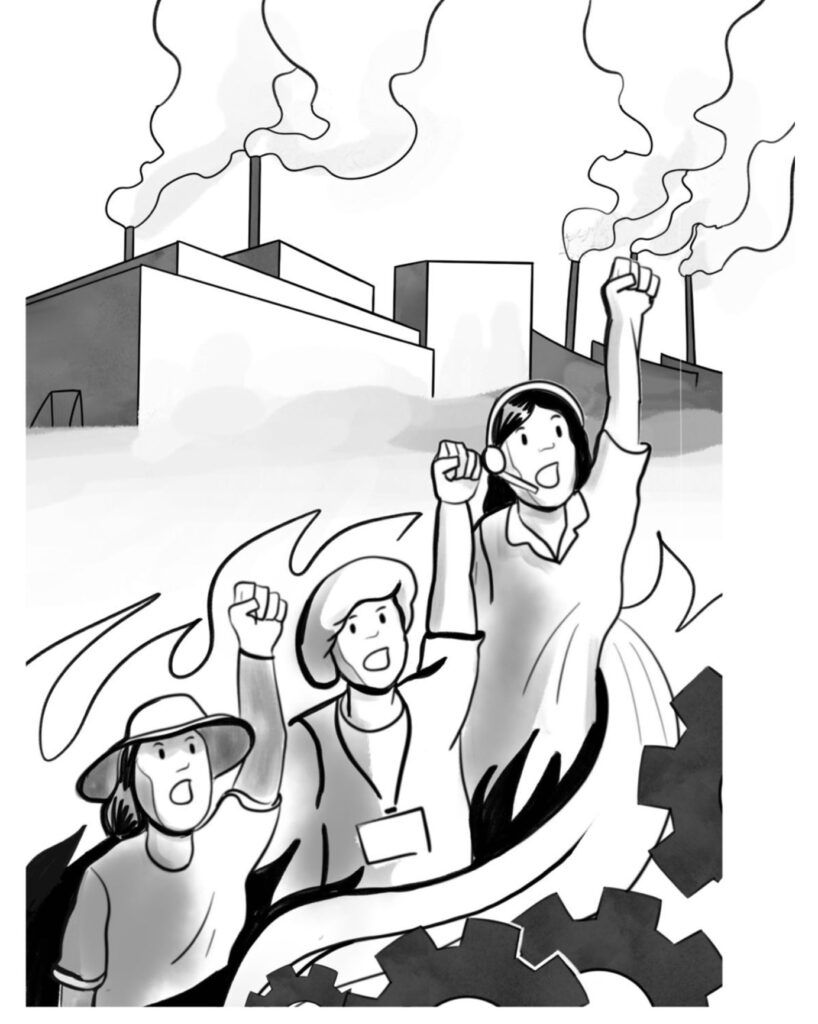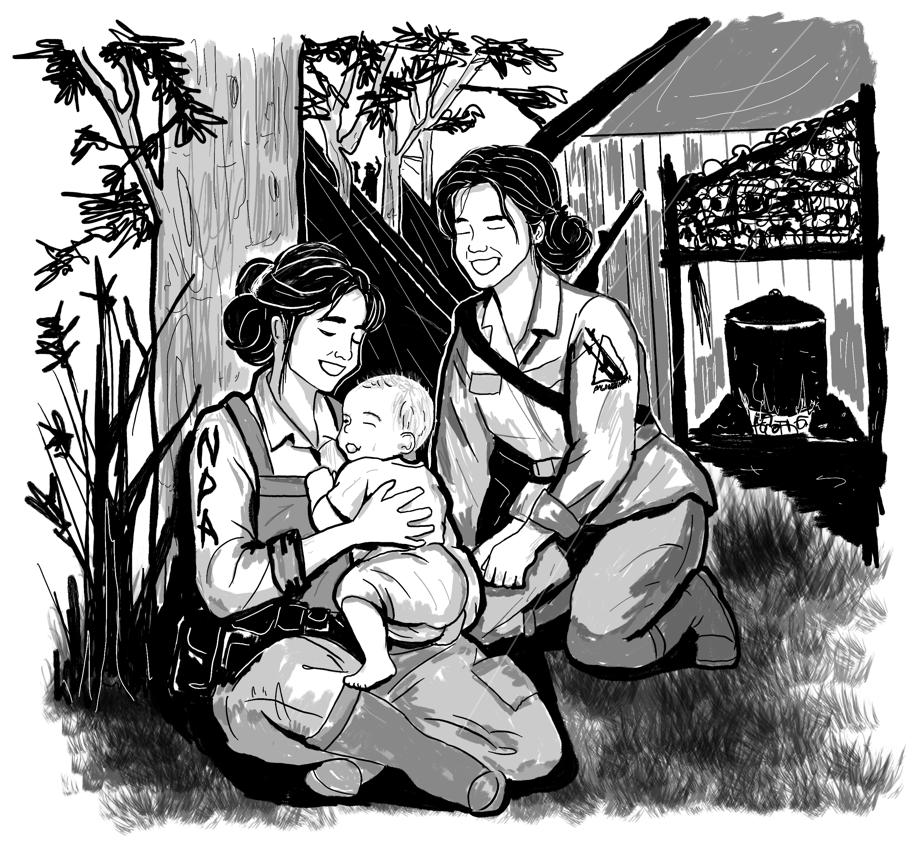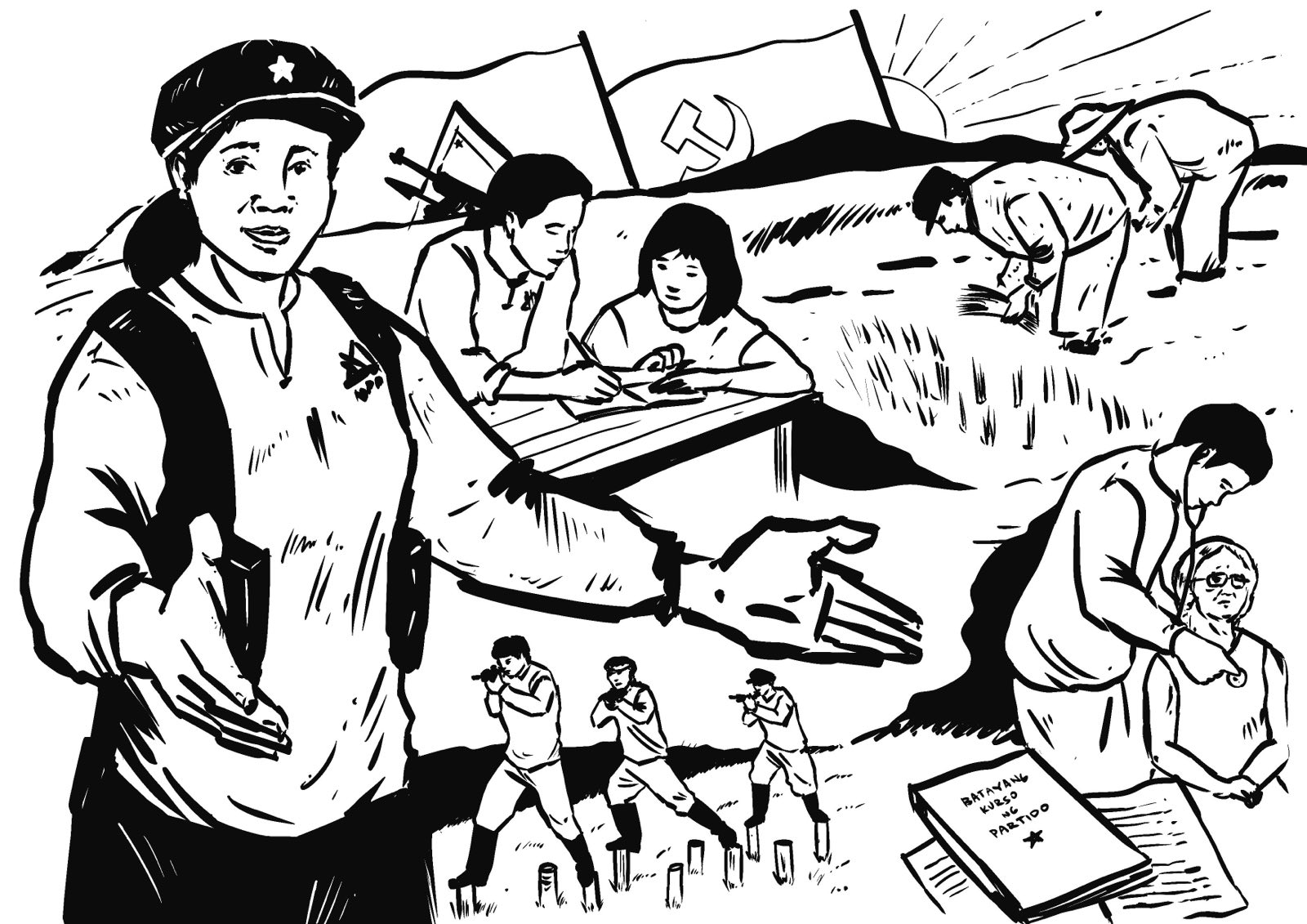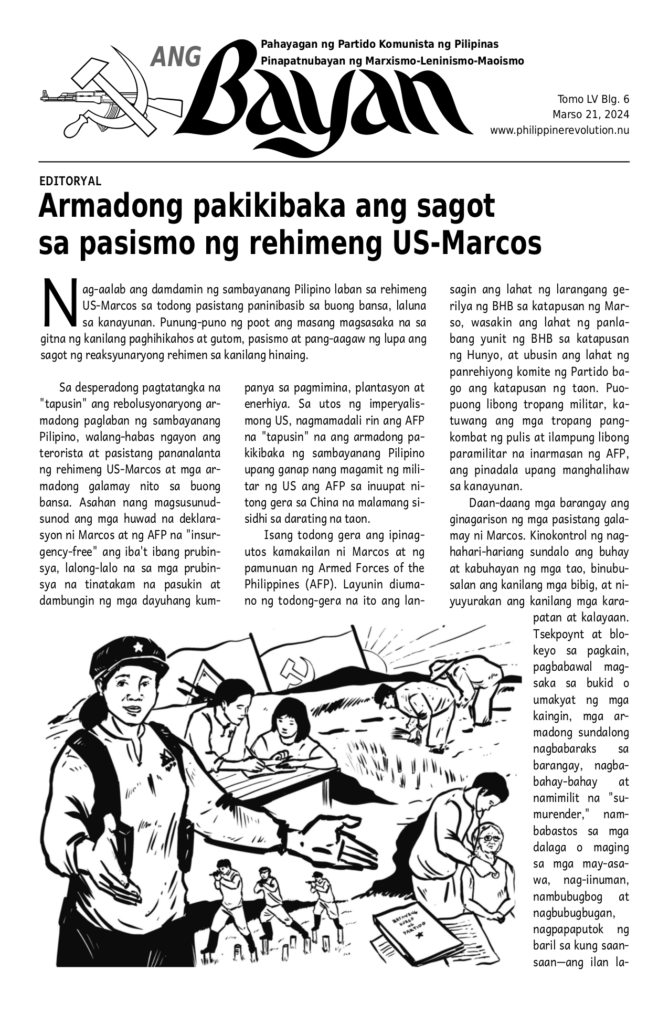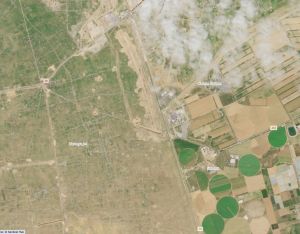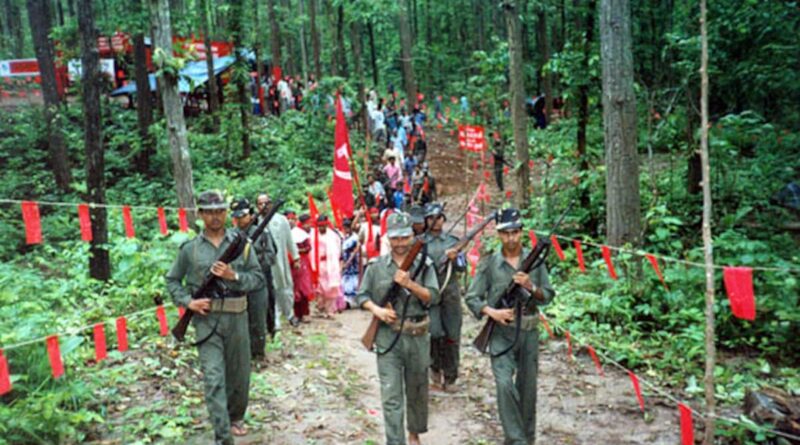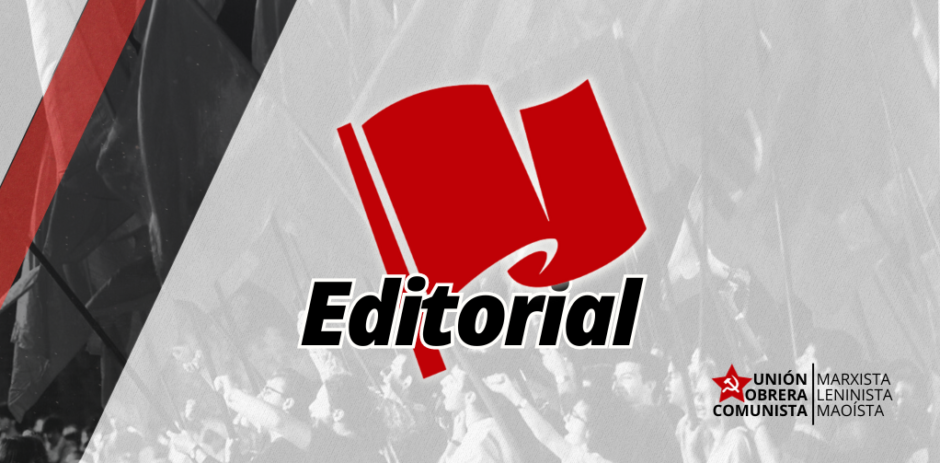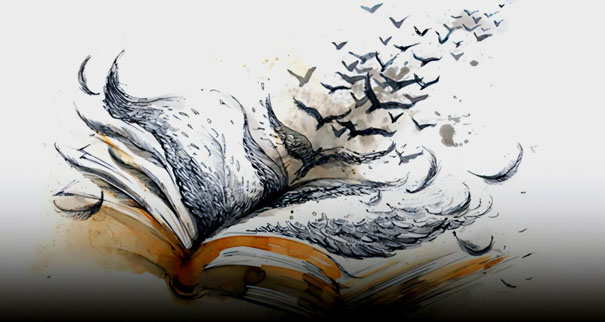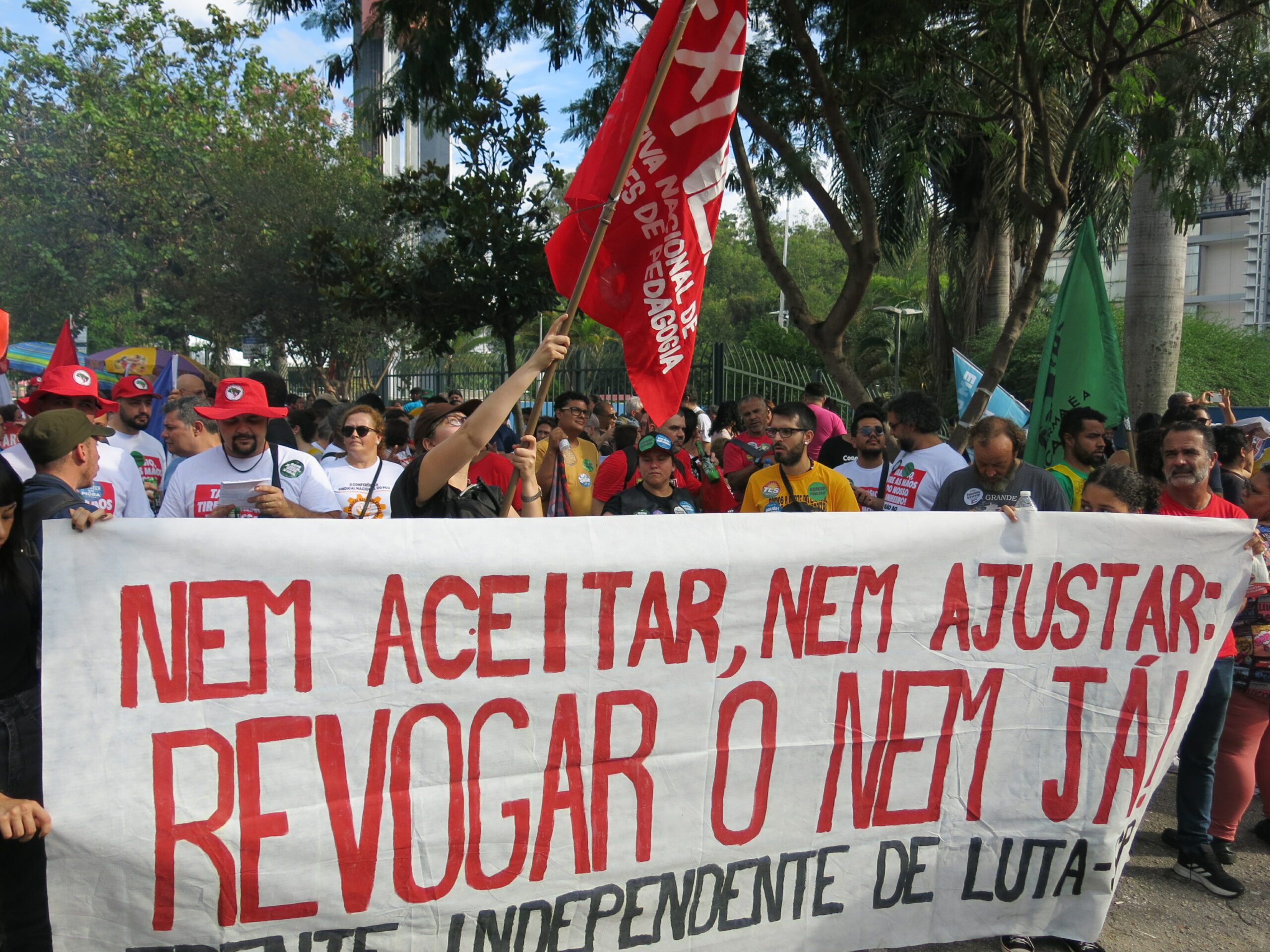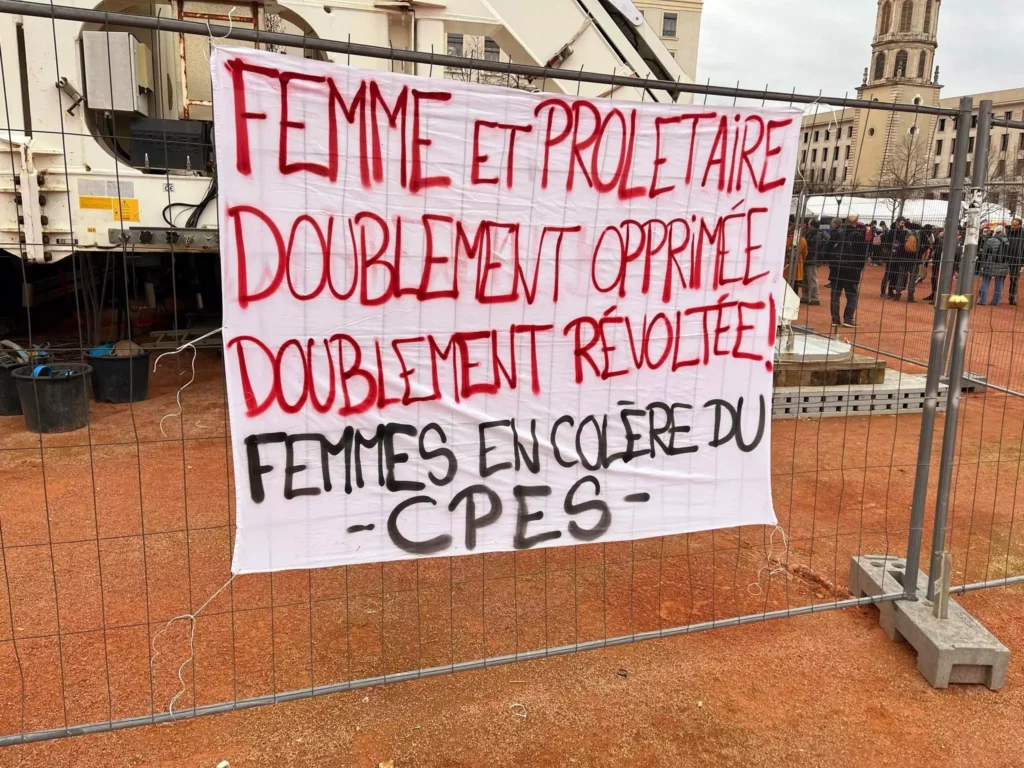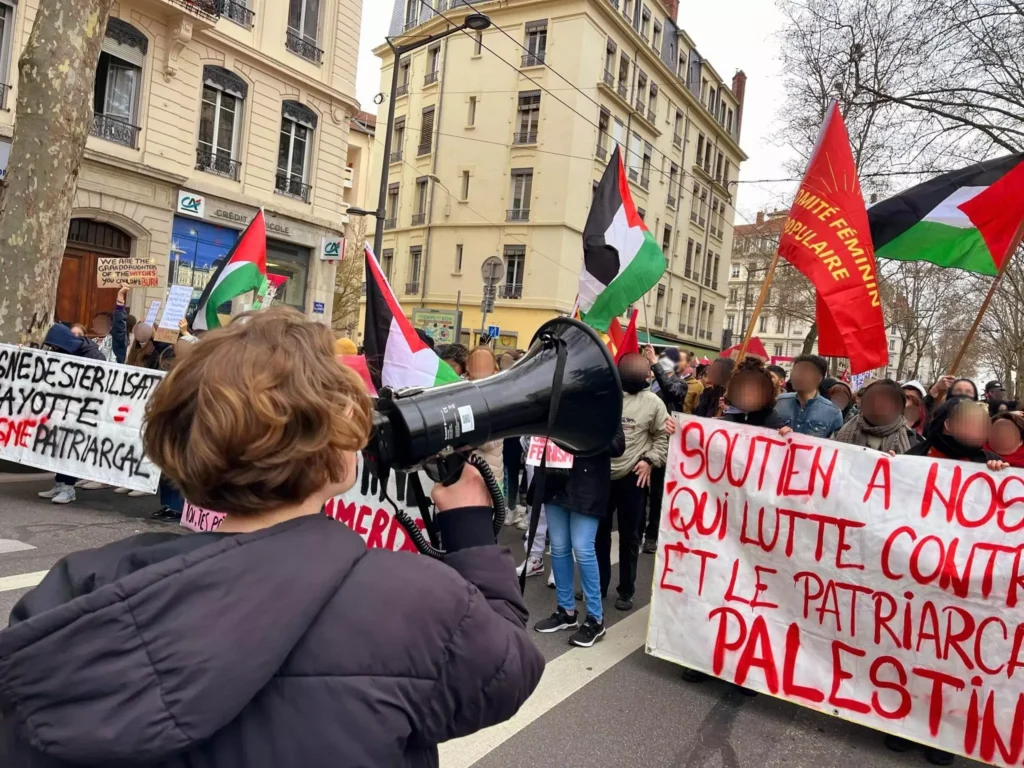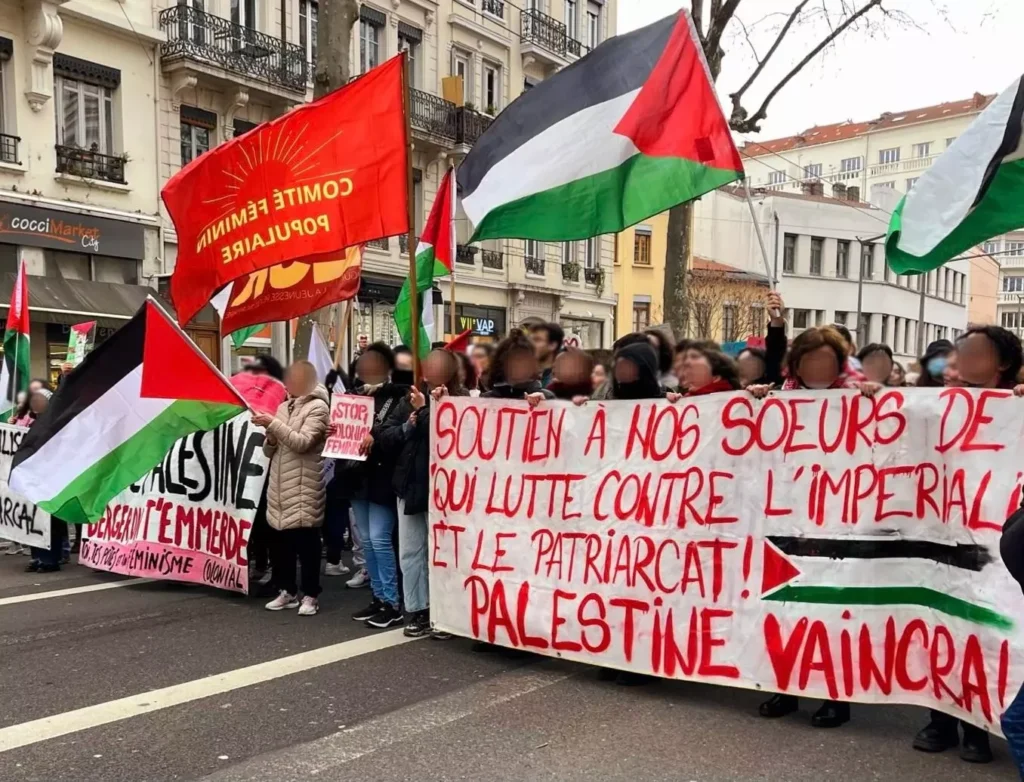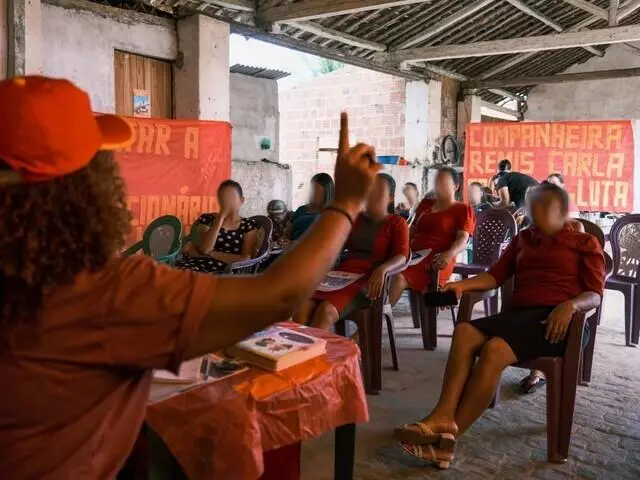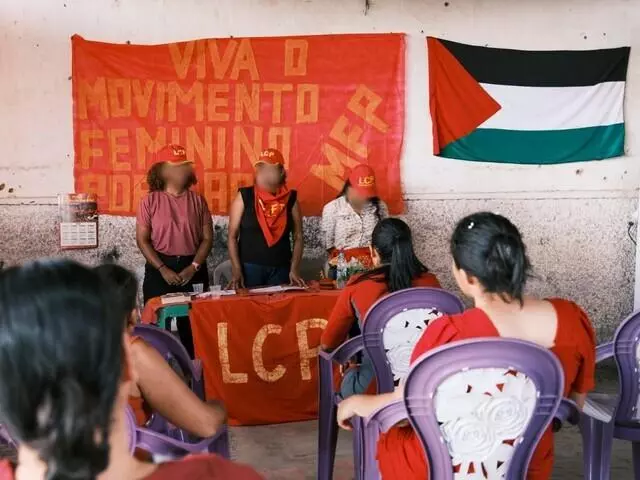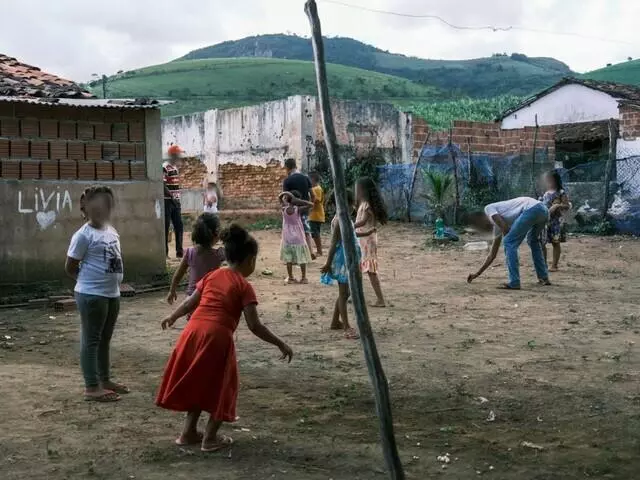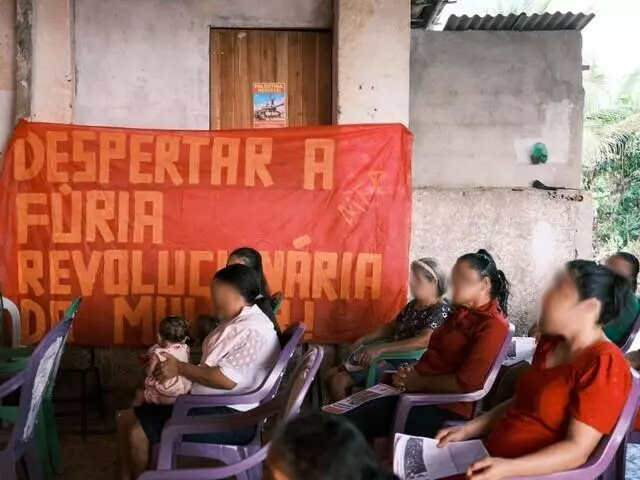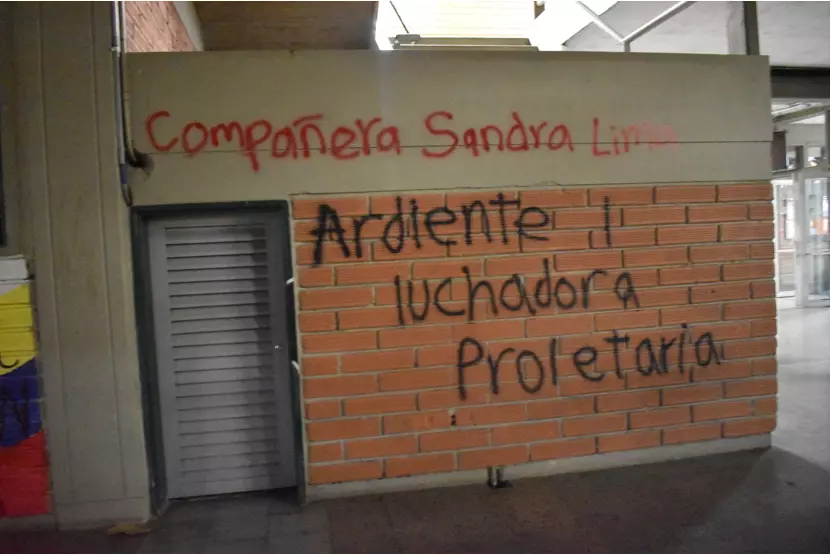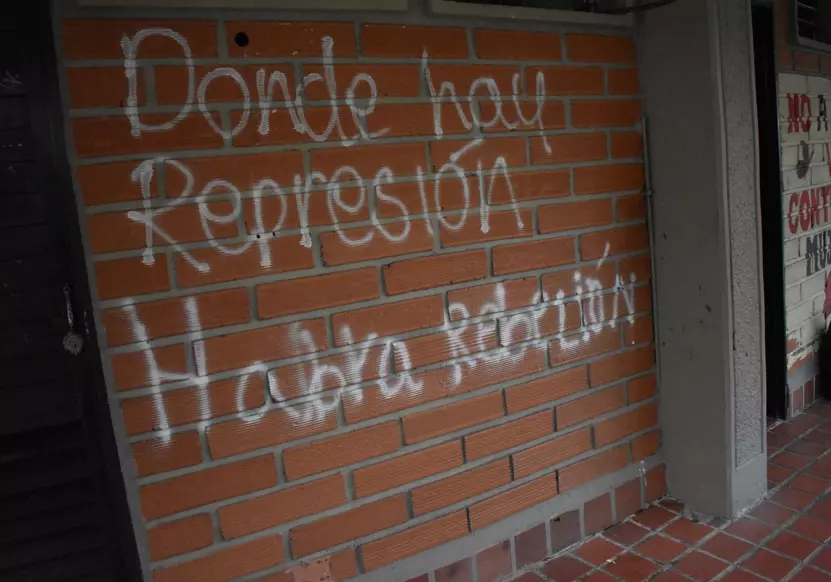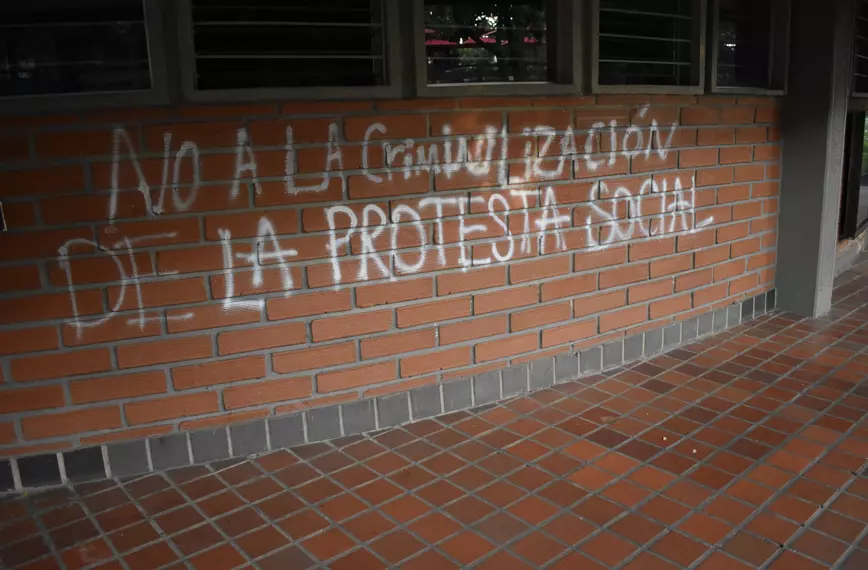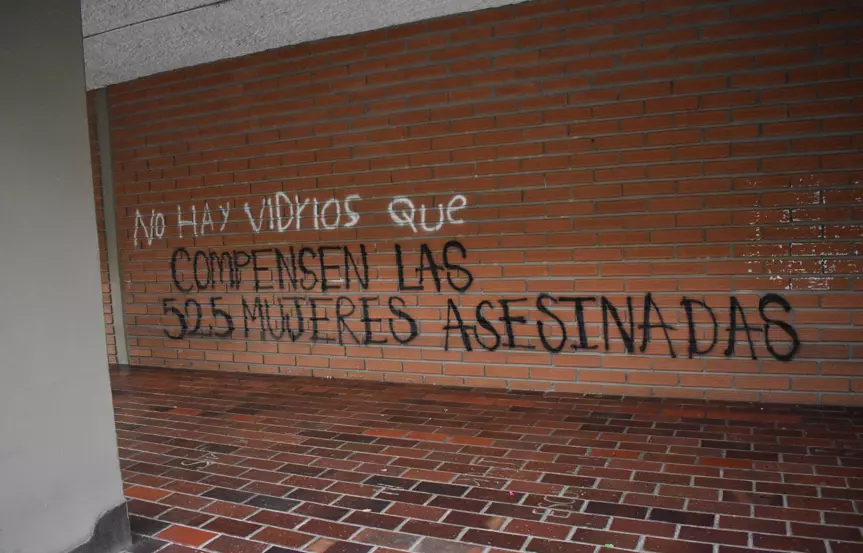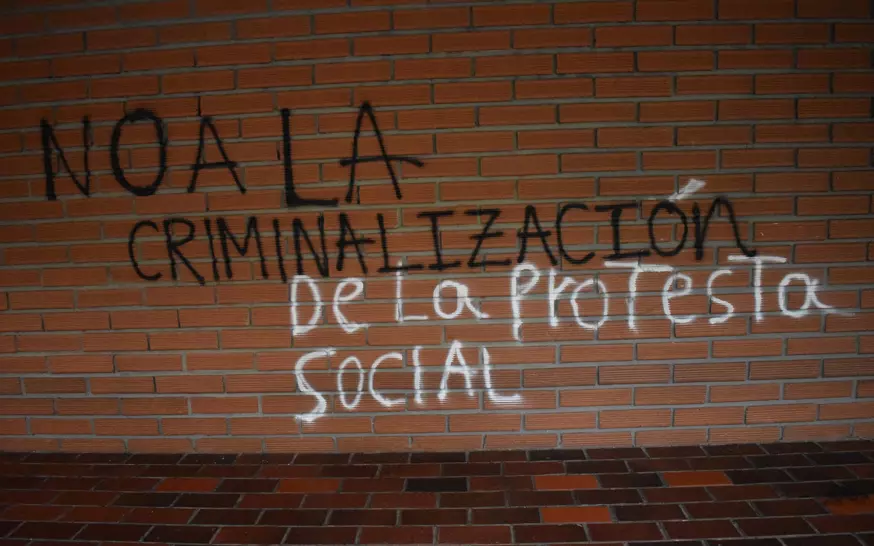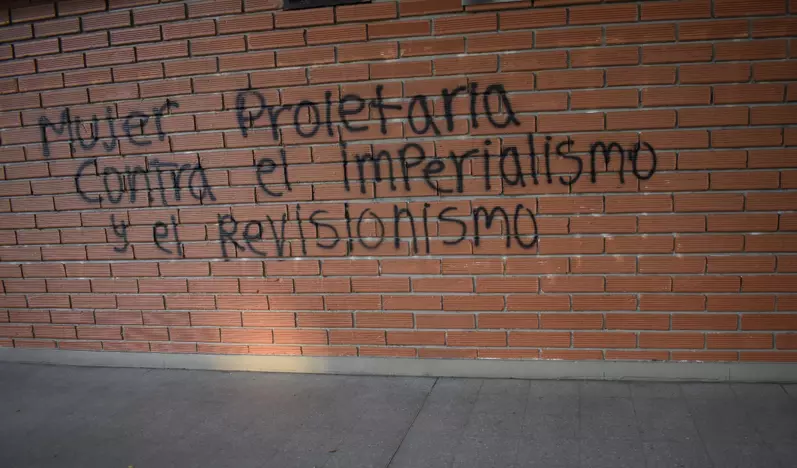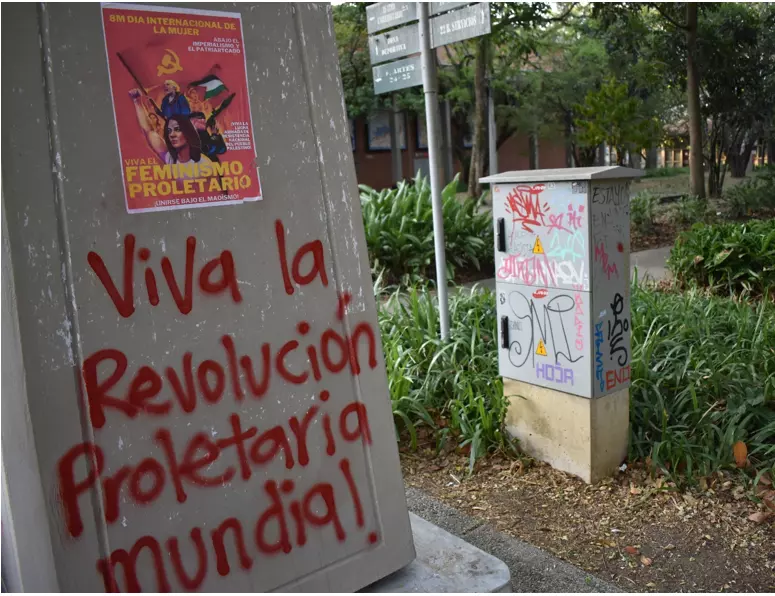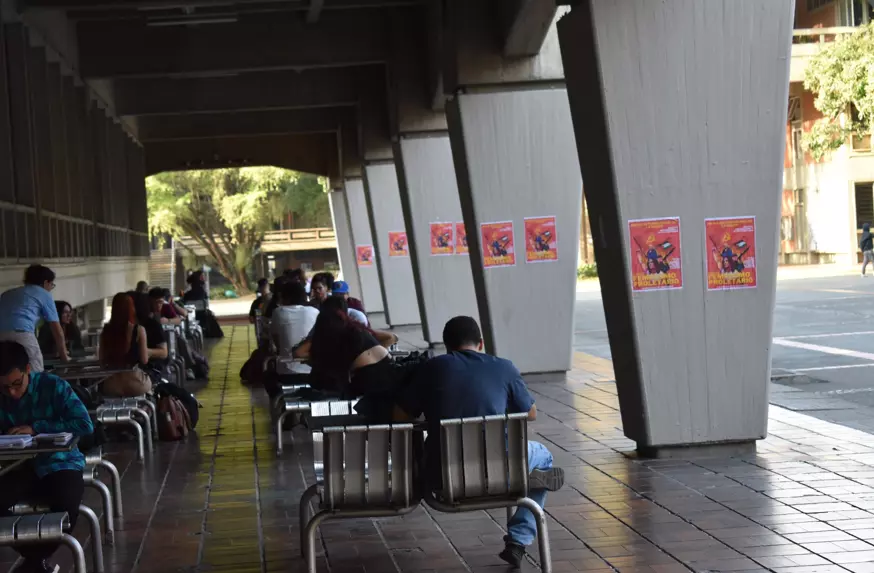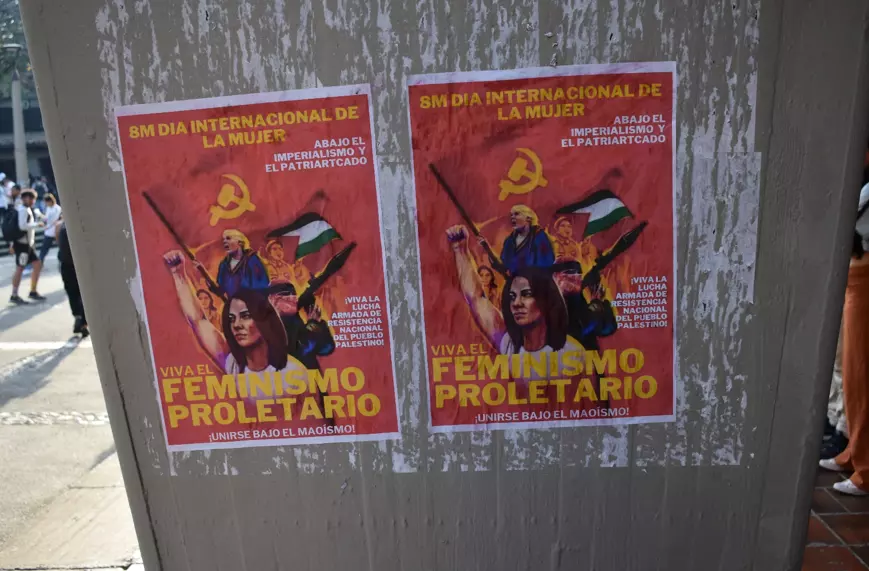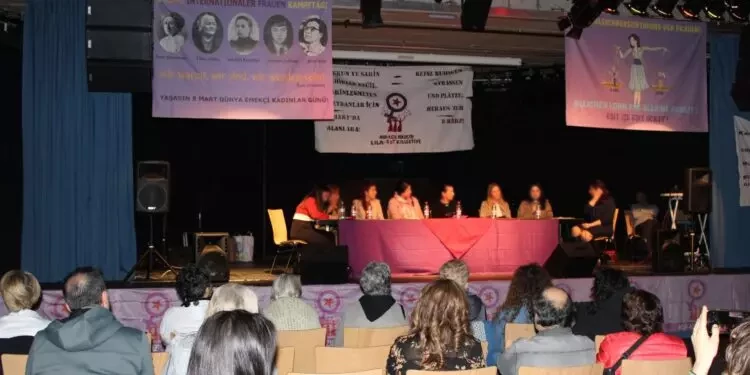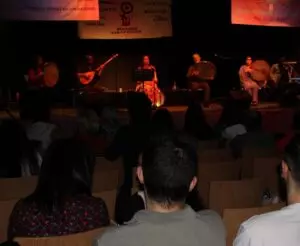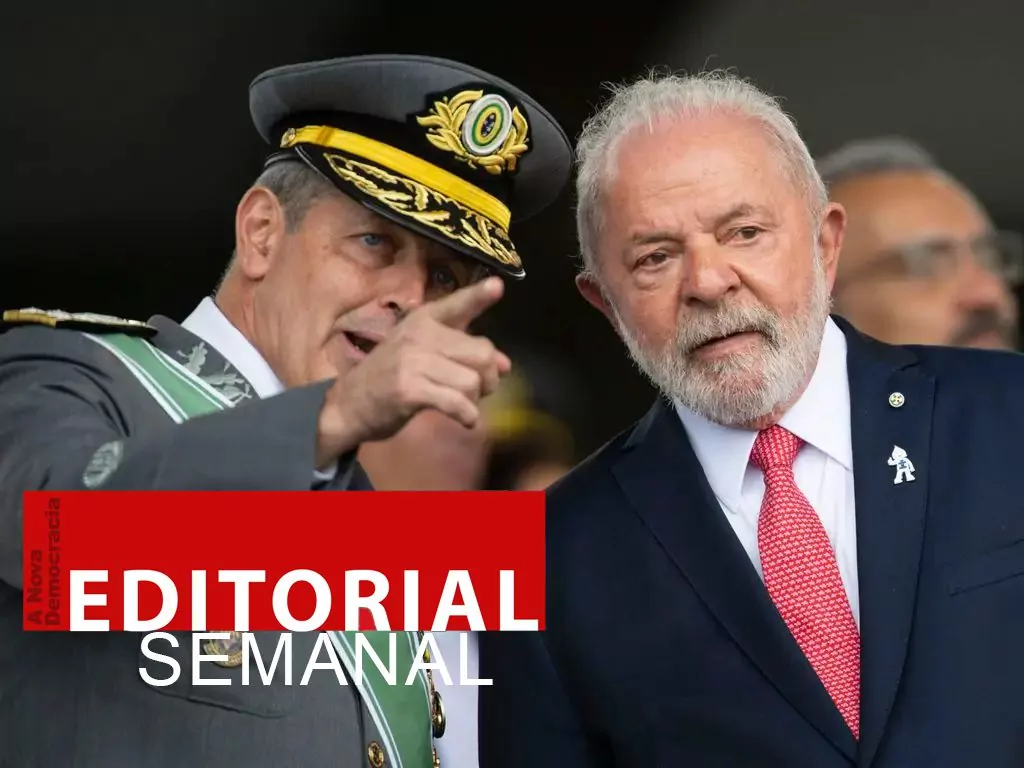The
Agrarian movements in the EU III
We have said, at the beginning of this
Theme of "Agrarian movements in the European Union (EU)", which today
We continue, that we did to raise our position and demarcate with the
official representatives and the monopoly of the press about the protest or
Demonstration of farmers (Bauerkampf), where they put everything by way of
tailor drawer under that concept of farmers, this is the
great monopolists and other capitalists of the countries
EU imperialists, who exploit agriculture as a special field of
the investment of capital and true farmers, to the proletariat
Agrarian and peasants
Our main purpose, in
The frames of these notes, which do not have the claim of articles, no
However, it leads us to differentiate, as Marx established it, to the
True farmers -the agro workers and the little peasants
(poor peasants)-, of capitalist businessmen who invest their capital
in the exploitation of agriculture.
Also, to differentiate
Imperialist countries of oppressed countries within the "EU". And, try to explain
What does the "reform" of the common agrarian policy (PAC) and the model respond to
European Agricultural (MAE), the struggles and the situation of the different classes
Faced with this "reform."
Changes in the agricultural model
European (MAE) and common agricultural policy (PAC) -the problem of
subsidies, markets and agricultural prices, etc.-, some points for the
moment, according to the official version:
- He
MAE
HE
cataloged as a frame that encompasses the
diversity of regions,
European agricultural traditions and systems
.
-
Small agriculture
Scale and structural change
, towards a growing diversity of models
agricultural, has important implications for governance, but also
should allow an adaptation of agricultural systems according to their site
In all European regions.
-
El it
HE
will form through
adaptation strategies
adopted
in
Each exploitation and along the value chains
To respond to
the
specific challenges of each sector and external
let them go
raising.
The "reform" of
PAC ”and the new Mae, is a process underway
to restructure agricultural production to value chains
monopolies (vertical integration), as they themselves write, to
Respond to the specific challenges of each sector and external. It is politics
Agrarian of the EU imperialist powers, in collusion and struggle, which "
covers
The three elements of sustainable (economic, ecological, social) development
,
that "attenuates the
Effects of market mechanisms
in
he
Structure adjustment
l y la r
Systems Resilience
Food
”.
The so -called "reform" are in
reality political measures to specify in the current conditions the
objectives set forth in the previous paragraph, and that pursues the largest
penetration of financial capital and monopolies by the generated
In agriculture of Eastern Europe (the east and southern Europe), not only
belonging to the EU, but also to European countries outside the "union"
such as Ukraine or other Third World countries, through "help" or
New commercial treaties such as the EU-MERCOSUR, EU-India, etc. For
condition the agriculture of the countries oppressed to the needs of the
imperialism.
This process is not from now on.
Process, which according to imperialist needs, combines protectionism with
"Opening" of markets ("liberalism"), prices and subsidies, which charges more
Force since the beginning of the 80s, it increases in the 90s and has great impulse
In 2000 and 2013 to “adapt” to the norms of the World Organization of
Commerce (WTO or WTO) and the new international conditions of the dispute
Inter-imperialist. It is necessary, in relation to the above, to study better
on the controls of origin, pesticides, biological agriculture and the so -called
regional products, etc.
It is important to take into account the
relationships between industry and agriculture in the development of
capitalism, the use of machines in agriculture and their development as
Internal and foreign market for the industry.
About this process,
Representatives of the reactionary parties and media commentators,
They say that the political consensus on the agrarian policy of the EU has been broken,
that before it was easy to reach a consensus with agrarian representatives, which
Now that is more difficult.
Then, the process
march in the midst of strong contradictions between the opposite interests of
the great monopolists in convergence with other capitalist sectors and the
conservative peasants of the imperialist tins of Europe
Western, similar to the case of the US with the commercial "treaties" of the
USA with Mexico, Brazil, Argentina, Paraguay, etc. Points against him
proletariat and little peasant.
One of the ways, in which
They express these contradictions, it is the protest of the peasants
(Bauerkampf), among which are the great monopolists of the sector and
other great agrarian producers, which as it has transcended, are the ones that are the most
They benefit from protectionist policies and subsidies in Germany,
France, Belgium, Italy, Spain, etc. while the European Commission and its PAC
They act as the representative of the set seeing the need to “reform” the
PAC for "structural change" and "the new internal and external challenges."
We cite from the European Commission,
In summary, the PAC history of its origins to the present, to
Show what we rely on to say the above:
1958 The Treaty of Rome places the
agriculture at the center of the activities of the
New European Economic Community
and assigns the task of achieving greater
agricultural productivity
, a fair standard of living for
farmers,
availability of
supplies,
markets
stabilized
y
a chain of
Safe supply with prices
reasonable
.
1962 launch the PAC,
Establish Common Market Organizations (OCM)
of cereals, pig, poultry,
wine and fruit.
Agricultural Guidance and Guarantee
(Foaga). It is established
A guarantee system
Based on prices support
production to ensure the sale of
agricultural production
.
1968 Since not only
HE
has reached self -sufficiency
, but also
has greatly overcome the
approach moves towards the creation of a
greater balance between
measures aimed at
agricultural markets
and the
intended to
modernize
Agricultural structures.
Grades:
After the postwar crisis and the application of the
market protectionism and then within the PAC, “it was achieved
the
self -sufficiency
agricultural
and livestock to the community block and the problem of the
Overproduction
. HE
They generated surpluses of the main agricultural products, causing the
accumulation of
stocks
,
which had to export (with the help of subsidies) in the best of
cases, donated to
Developing countries
and other times stored or destroyed within the EU. ”
That is, the crisis of
overproduction of the EU imperialist countries was exported (and followed
doing) to Third World countries, following the example of imperialism
Yankee, contributing to maintaining the misery and delay in agriculture of the
Third World, that is to say the semicolonial or colonial situation and the
semi -feudality, developing on that basis bureaucratic capitalism to
service of your imperialist interests.
M
Odernize structures
agricultural
1984 A system of
dues
to limit overproduction and administer
supplies for products
Like milk
. Producers who exceed their
quota are now obliged to
pay a tax for surpluses.
1985 The Green Book on
PAC perspectives presents ideas for greater
debate, such as the reduction of
support for prices and diversification of
income support measures
agricultural. These ideas include recognition
that in addition to ensuring our
food supply,
the Agriculture
contributes to the maintenance of
social fabric in rural areas, protection
of the earth and the conservation of
natural resources
.
Note: Need for small
agricultural farms for the rest of capitalist farms in the
capitalist agriculture for agricultural workforce under conditions such as
They say, of limitations to the immigration of the labor force of the
Third World. Population needs of rugged and remote areas.
1992 The reform
MacSharry introduces a new support approach to
farmers, with the objective
of
reduce the budget of the PAC
,
Cut the
Overproduction
y
fulfill them
obligations under trade
International
. Agreements
1999 The Agenda 2000 program
It paves the way for politics reform
EU regional and PAC, and
seeks
strengthen EU's ability to receive
new members and continue
complying with the rules of the organization
World Trade about
International Trade
.
2003 the Fischler reform, also
known as "review
Intermediate, "check the PAC.
Enter the innovative single payment regime
(RP u), but
eliminates
The link between the subvent and the production volumes
For a large part of the aid
of the PAC
.
Reform of
2013:
The 2013 reform defined the general lines of the
PAC for the 2014-2020 period.
(
Summarized from: 1962-2022: The common agricultural policy of the EU at 60 'in the
Think tank pages of
European Parliament)
Note:
Reform 2022-2027: It is the one that has entered collusion and struggle
Seen the above, we briefly see the
Development of capitalist agriculture in advanced countries
(imperialists) and in the back (semicolonial) countries of the EU, starting
of the same sources of the commission with our comments.
1.
The
displacement of small production by large production in the
agriculture in advanced countries and the concentration of the land in the
backward countries of the EU
The development of agriculture
In EU 27 it is considered and defined by the EU in the so -called agricultural model
European, of which one of its documents says:
"(...) as a frame that encompasses
The diversity of regions, traditions and European agricultural systems reflected
in
The wide variety of agricultural structures
, types of cultivation of
The land and product range "
“ (…)
change process
long -term structural
", as:
Change
to a
Growing Diversity of Models
, which should allow an adaptation of
agricultural systems
according to its site in all regions
European
.
They highlight a
decrease
substantial of the number of agricultural farms in almost all NUTS regions
EU-27
(NUTS are abbreviations for nomenclature of
Statistical Teritorial Units 2).
And
increase
significant the size or intensity of the remaining farms
I
a
greater dependence on union with respect to imports
agricultural
, that is your projection.
This tendency a
the
agricultural concentration
It is especially evident
in the
South and Eastern regions
s. The
mountainous areas
also
They run a
high risk of abandon
o.
Their projections predict
a
greater polarization of the agricultural structure
, with an abandonment and
a continuous specialization in all scenarios.
Los
Factors
drivers
of the
decline of agricultural farms
are
mostly
structural,
economic and social
And, to a lesser extent,
environmental.
On the effects of PAC
, they say: factors such as subsidies
and agricultural prices, and macroeconomic and demographic variables
They perform
Greater role in the new Member States
And they affect
different from the different types of farms.
Case studies,
They demonstrate that the main structural factor of the
decrease in
number of farms
It is an e
market structure that favors
Intensive production and large -scale farms
, linked to some
more and more reduced margins and to the low negotiation capacity.
In addition, the barriers to the entrance
aggravate the problems of demographic change (aging of
populations) and the rural exodus.
Although there is concern for the
Union subsidies system (PAC), consensus is maintained
regarding such aids are
indispensable, but must adapt even more to reverse the
negative effects ”(of synthesis:
Research for the Agri - the future of the European agricultural model:
socio -economic and territorial repercussions of the decrease in the number of
agricultural farms and
farmers in the EU)
Our
comments
:
Europe is first and foremost a geographical concept, but
We talk about Western Europe and Eastern Europe, we are no longer talking
of geographical but economic-social concepts. As Engels said at the end of
19th century and Lenin reaffirmed, after 1905, Eastern Europe is not a
geographical concept but economic-social. This is necessary to advance because
We will find this reality when dealing with the agrarian problem in Europe,
In addition, that among the countries there are differences of degree and also within each
country, as for this problem there are regional differences, more marked in
Spain and Italy. In the same countries of Eastern Europe there are differences
among them.
Important not to be left
confuse when official studies and reports treat the “change
structural ”in the agricultural farms of the EU generalize about the
process of disappearance of small agriculture for the benefit of the big one in
the developed or imperialist capitalist countries, and of the minifundios in
benefit of the great landowner property in the development of capitalism
Bureaucratic in agriculture in oppressed or backward countries.
Marx established the law of
Displacement of the labor force not only in relative terms but
absolute with the development of capitalist agriculture unlike
decrease in the relative labor population in the industry while the
employment absolutely.
Problem is that, in many
cases, the classification or determination of the agricultural structure is done as
If in EU 27 there was a single economic world in agriculture, without
Differences in the development of capitalism, based on this, sometimes
classifies agrarian companies not for their investment and accumulation of capital,
but for its size measured in hectares. This leads to the confuse to
true agricultural producers, workers and small peasants, with
capitalists who invest their capital in agriculture.
Take into account, also, the
need for small agricultural farms for the rest of the
capitalist farms in capitalist agriculture for the force of
agricultural work in conditions like themselves says, of limitations to the
Third World Labor Force Immigration.
The above is behind
terms such as diversity, small production, abandoned mountainous areas,
etc
They need, in countries of
Western Europe, set a certain amount of population in the field for
agriculture and settlement; Thus, as in the backward countries of Europe
Oriental, the development of bureaucratic capitalism in agriculture on the basis
of the estate, the minifundio needs to maintain the peasantry so that
Work Force suppl
Commenting on the aforementioned: in
The countries mentioned above seek to maintain the landowner-minifundio binomial,
so that it is the little peasants who provide labor force
cheap, low salaries, for food security and the industry of the
Imperialist countries, as well as small agriculture in countries
Imperialists, for remote and mountain areas for these for reasons of
settlement and delay.
EU Agrarian Policy
pursues to subordinate the agricultural production of semicolonial countries to their
Imperialist needs. The form will be through unequal treaties.
"Help" to Ukraine or "Free Trade Agreements" to bring cheap soybeans
from Brazil, Argentina, Bolivia and other countries. While they export
capitals, supplies, machinery and knowledge, organizing their chains of
value under their monopolies in these places, flooding this countries with their
Cheap goods.
Important always keep in mind
of the two aspect that implies the penetration of imperialism in the countries
Oppressed or backward from the Third World, which penetrates to Europe itself
(President Gonzalo).
He
President Mao, applying Marxism-Leninism, to the specific study of the
History and Chinese society, established the character of society and
Chinese revolution. When it deals with the character of Chinese society and changes
operated by the penetration of imperialism in China, establishes the two
aspects that are inseparable from this domination:
"However, the new phenomenon
We have talked about,
the emergence and development of capitalism,
It constitutes only one aspect of the change operated following the penetration of the
Imperialism in
China
.
There is another aspect that is concomitant with the first and that, to the
time, hinder it: the collusion of imperialism with feudal forces
Chinese to prevent the development of Chinese capitalism
.
By penetrating our country,
Imperialist powers in no way they intended to transform China
feudal in a capitalist China. His goal was the opposite: to make
She a semi -colony or colony.
To do this, the powers
Imperialists have used and continue to use all means of oppression
military, political, economic and cultural, which has allowed them to convert
Gradually to China in a semi -colony and colony. ”
“
National capitalism has
developed
to some extent and play a considerable role in
China's political and cultural life. However,
has not reached
become the main form within its economic-social regime
;
is
very weak
, and for the most part it is (more) or less
associated with
foreign imperialism and internal feudalism
”(President Mao Tsetung,
The Chinese revolution and
The Communist Party of China,
December 1939).
ADDITIONAL NOTES
:
1. On some occasion we asked us
Why did the EU paid the
Farmers to leave the land in fallow? They refer to
The
Commission produced further proposals to address budgetary concerns in 1987
which were
adopted
in 1988;
to the EU Structural Funds to
support restructuring and rural
development.
Socio-structural measures were introduced to complement restructuring including
measures
to reduce the area under cultivation (set-aside and early retirement) and
measures to
compensate
farmers for the adverse effect of stabilisers to their income (such as direct
aid to
incomes,
support for extensification - reducing livestock stocking density - and for the
conversion
to
products not in surplus). Support for environmentally-friendly farming methods
became an
option
for Member States in 1987 (Daugbjerg and Feindt, 2021).
We think,
which mainly has to do with the measures against the crises of
Overproduction of the sector. We rely on the historical summary of the PAC of the
Own European Parliament: '1962-2022: the common agricultural policy of the EU to
60 '. But it is necessary to deepen more in the study of the agricultural issue and
Agricultural policies to have a more complete explanation.
2.
On EU's food policy, expressed as follows:
2019
He
European green pact
establishes EU's commitment to address
Challenges
related to climate and the environment
acting in a series of
areas
policies, included
Agrifood policies.
2020 in
line with the road map of the
Green Deal
, the
strategies
'of the
farm
to the table 'and biodiversity
.
2022
The commission services analyze the strategic plans of the PAC in a
dialogue
structured with member states, with the aim of approved
opportunely
the strategic plans for its implementation from the 1st of
January
of 2023.
The renovated PAC is considered a key policy to advance
toward
Most sustainable food systems
(of the summary mentioned above).
About
The EU and PAC food policy, we transcribe some quotes from Carlos
Marx,
(Manuscript
Economic of 1861 - 1863) about
the
subsistence means required by the worker to
keep
as a worker, to live as a worker and to procreate. That is, for the
production and reproduction of the workforce, based on the assumption that
Each capitalist when he establishes his company
considers
to wages as something given in the place and time where it is established.
We notice,
that with the following appointments, we do not intend to clarify the issue of the
EU policy and all propaganda in the media on healthy food or
safe, with agri -food policies, climate and environment,
We just want to give an idea of meaning
of those policy and that propaganda, of that bombing in all media and
Different scenarios of "healthy food", vegetarian, vegan, etc. We believe it is
necessary to deepen the subject.
Next the quotes:
//
"Reduce the subsistence cost of man, through decrease
of the
natural price of food and clothing, thanks to which
HE
Holds life, and wages will ultimately go down, to
WEIGH
That demand for workers can increase
BASTANTE
” (Ricardo, On the Principles of Political Economy, 3rd ed., London,
1821,
p. 460). //
//"He
natural price of work is the price that is necessary to allow
workers,
One next to the other, subsist and perpetuate its race, without increasing
neither
decrease. The ability of each worker to sustain himself and
to its
family does not depend on the amount of money you can receive as
salary,
but in the amount of food, basic goods and comforts
that this
money can buy. The natural price of work, consequently,
depends
of the price of food, essential goods and
MOD CONS
... With an increase in the price of food and goods
OF
First necessity the natural price of work will increase; with a
drop
Of its price, this will fall ”(Ricardo, L.C., p. 86). //
// He
English fish (unit of measure for cereals) = 1⁄4 bushel.
There are 8
BUSHELS IN A QUARTER. The standard bushl contains 2, 218 and 1/5
inches
cubic and measures 19 1⁄2 inches in diameter and 8 1⁄4 inches
depth.
Malthus says:
"Starting
of a comparative review of the price of cereals and salaries
from
The kingdom of Eduardo III onwards, we can conclude that, during the
last
500 years, a day -day profits in this country have been more
frequently
Below a fish of wheat; This wheat fish could be
considered
somehow as a midpoint, or a point rather
BY
Above the middle, around which work salaries
IN
Cereal terms have oscillated, varying depending on the
Oferta y
La Demand ” (Malthus, Principles of Political Economy etc., 2nd ed.,
London,
1836, [p. 240,] 254). //
Marx
dice:
Yes one
lower quality merchandise is placed in the place of one more
valuable
And better, which was part of the main means of
subsistence
of the worker, for example, if corn or wheat replaces
to the
meat, or if the potatoes are introduced instead of wheat or rye,
he
level of work capacity value falls naturally, because
he
level of your needs has been forced to descend. At our
reflection,
However, we will assume at all times that the quantity and
quality
of subsistence means, and therefore also the magnitude
of the
needs, at a given level of civilization, it is not pushed
Never to
The Low, because this study of the elevation or reduction of said
level
(particularly its artificial reduction) does not alter at all the
considerations
on the general relationship.
(…)
Result
of the greatest importance to understand the relationship-
capital
determining the value of the work capacity (labor force, according to
He
Capital), since the-capital relationship lies in the sale of said capacity.
What we have tried to establish is the
way in which the value of this
commodity
It is determined, because the essential feature of the relationship is that the capacity
of
work is offered as merchandise; But the determination of its value of
change
while merchandise is the decisive factor.
As the value of
change
of work capacity is determined by values or
prices
of subsistence means, the uses of use necessary to
the
preservation and reproduction of work capacity
, the physiocrats
they got
form, in general terms, a correct conception of
his
Value despite how little they understood about the nature of value
in
general.
Hence the salary of work, which is determined by
the
Average life needs
,
Play an important role with these
people,
that established the first rational conceptions of
capital
in general".
2. The situation of
Eastern European countries
Before entry to the EU and in the
PRESENT
Will continue....

